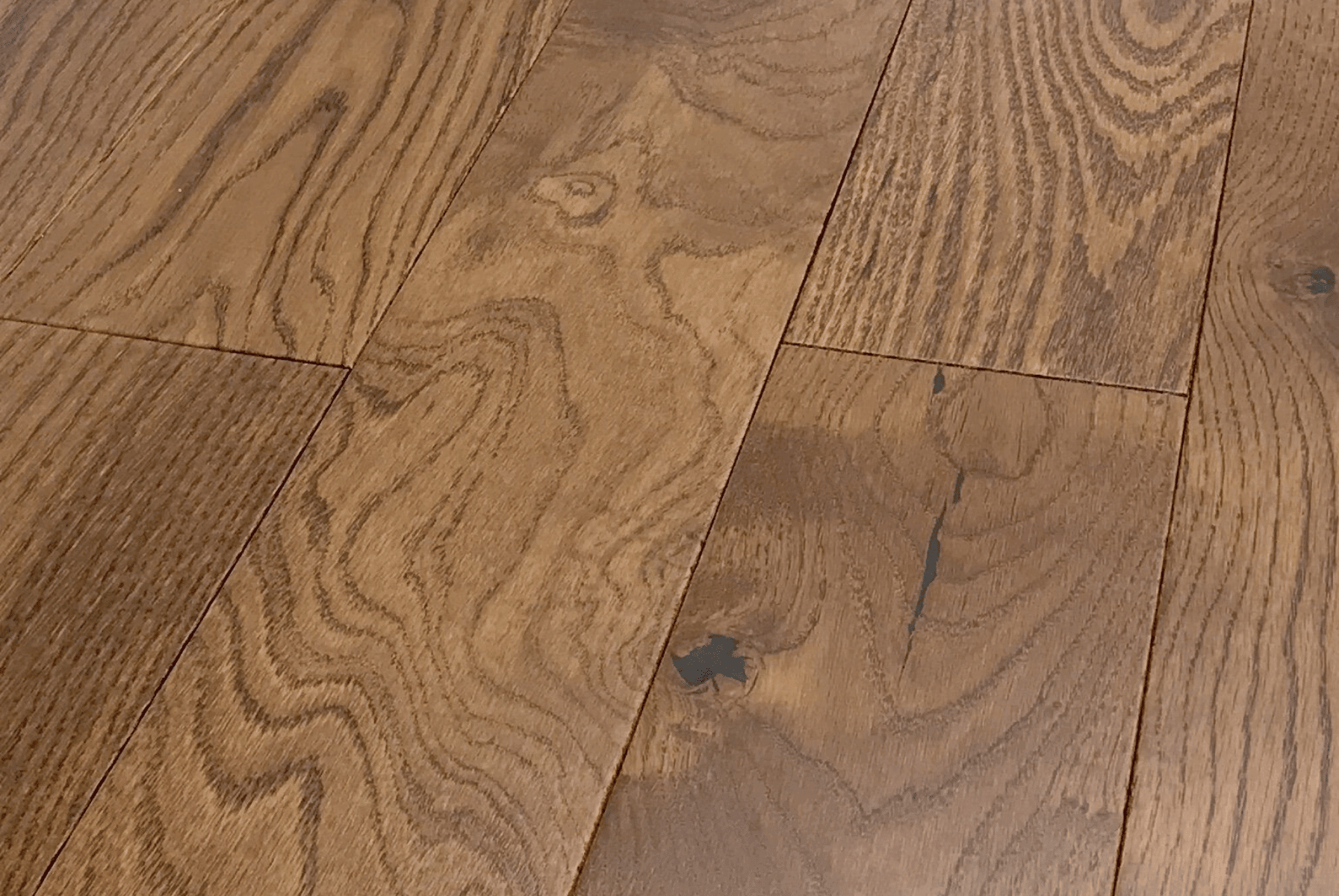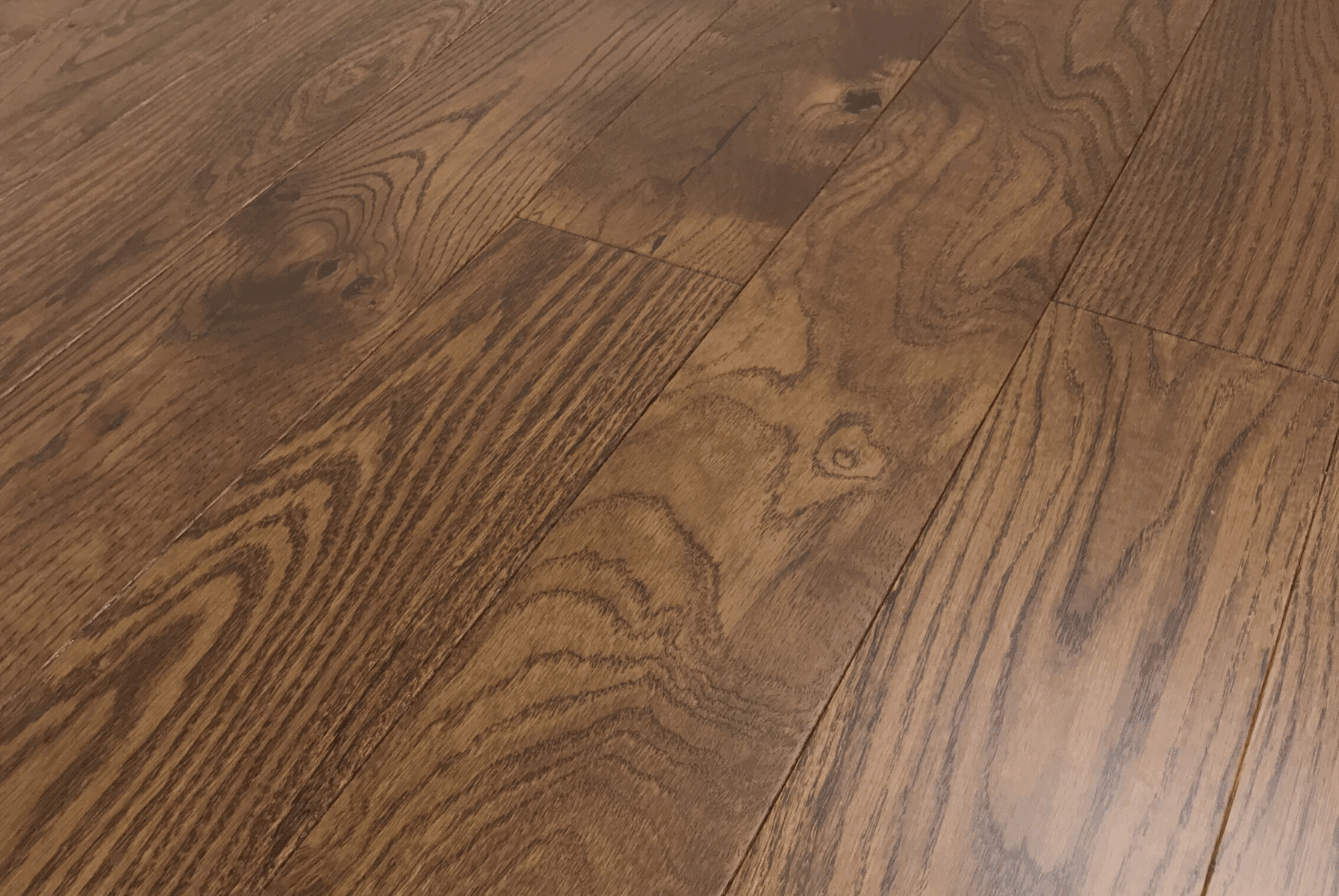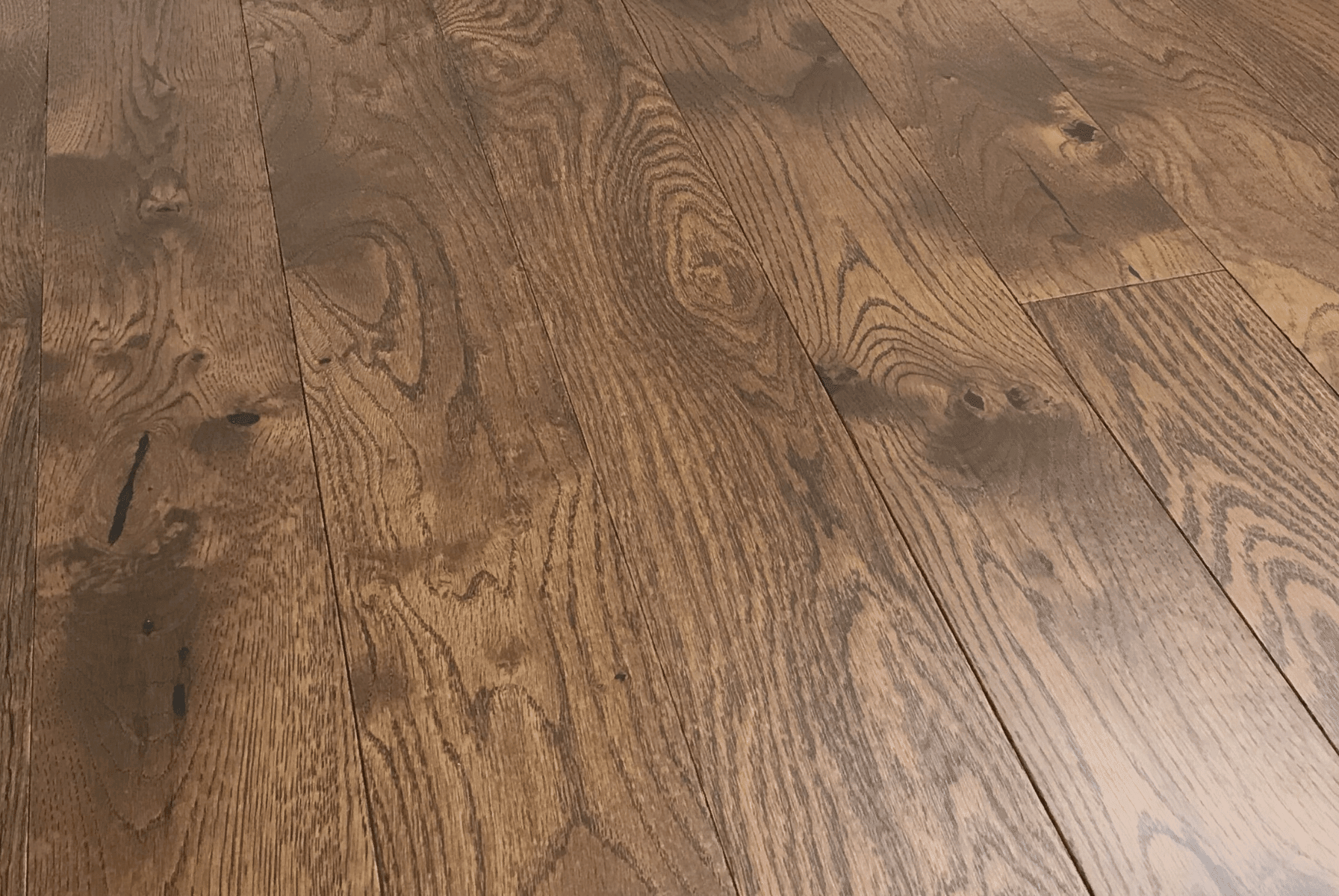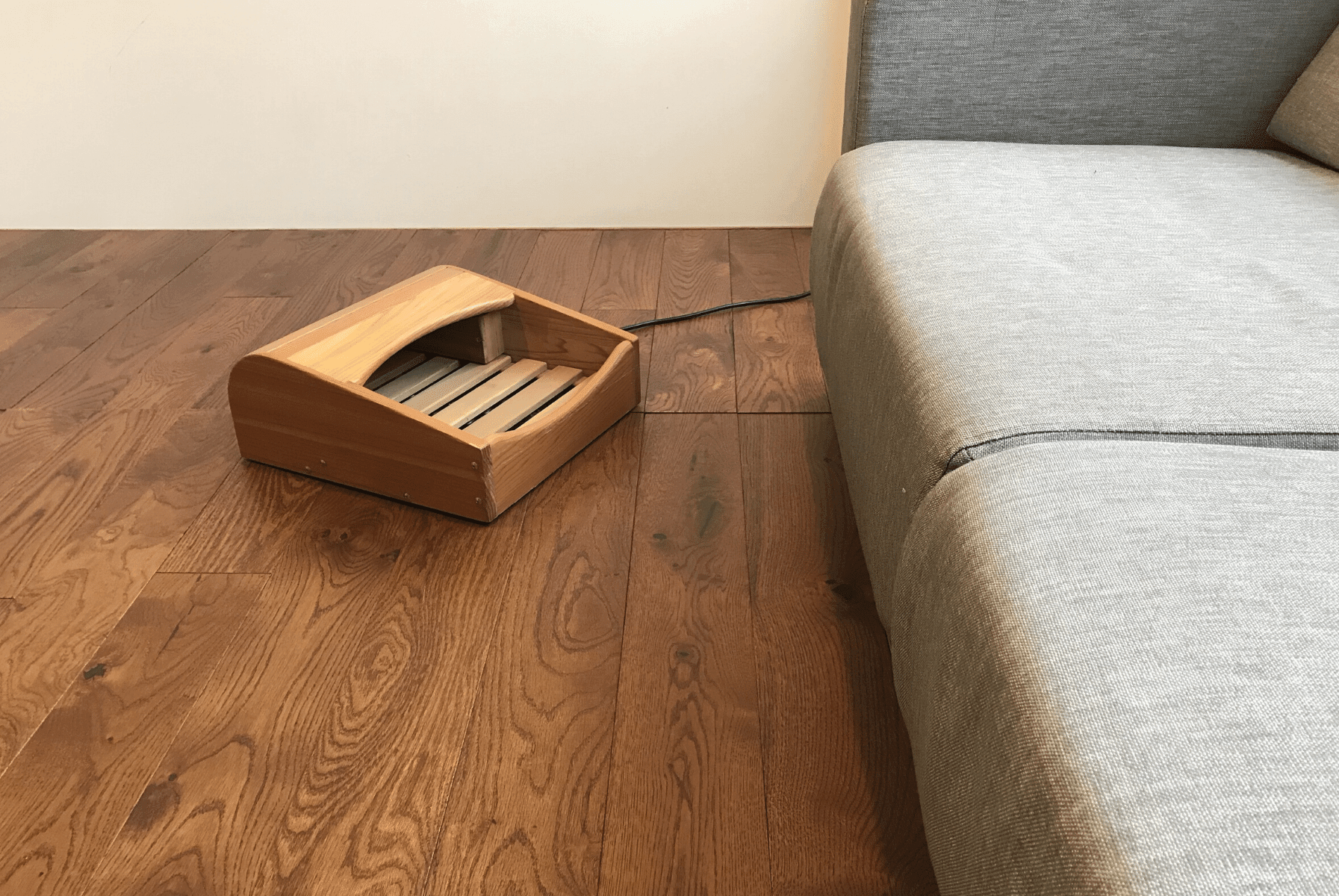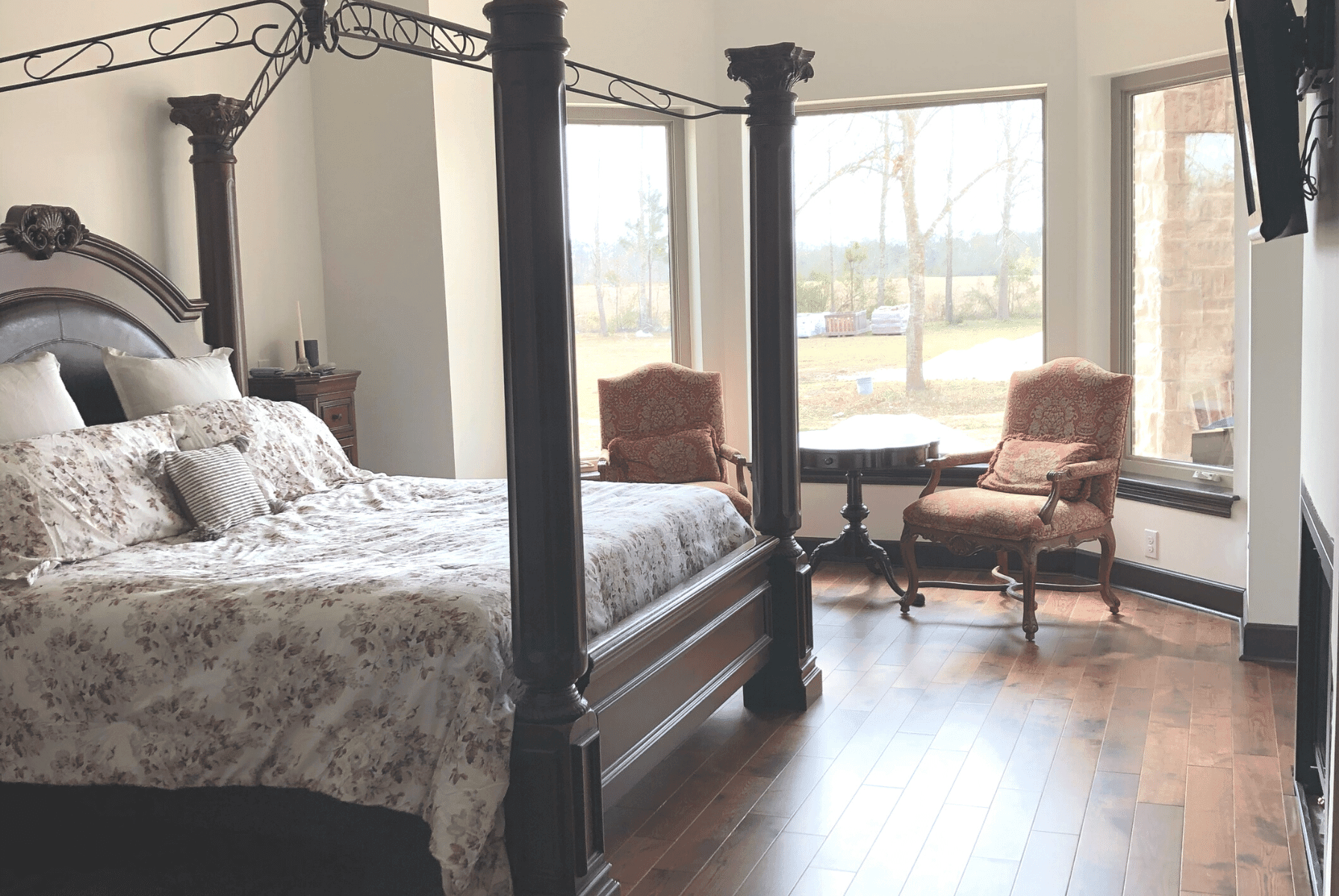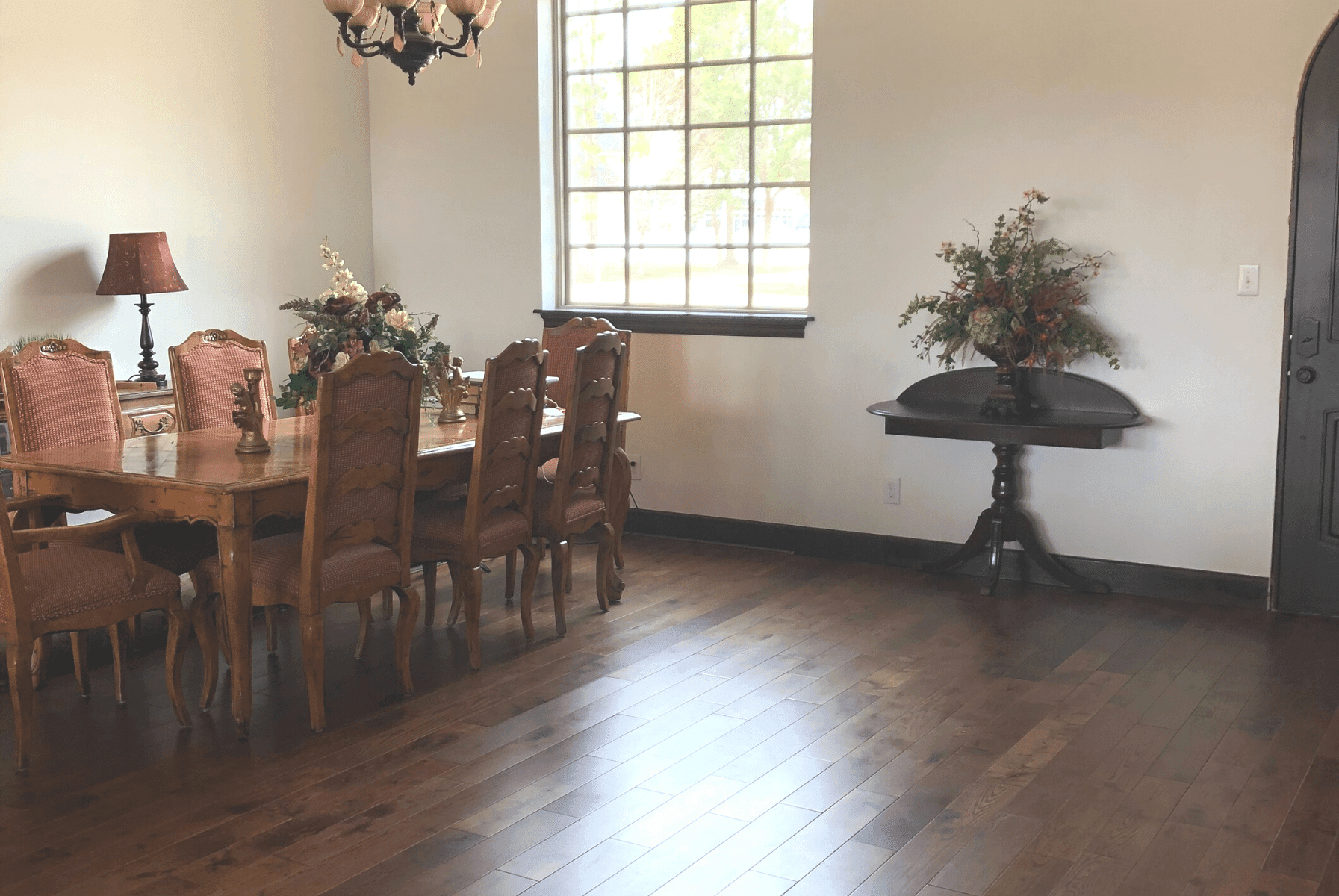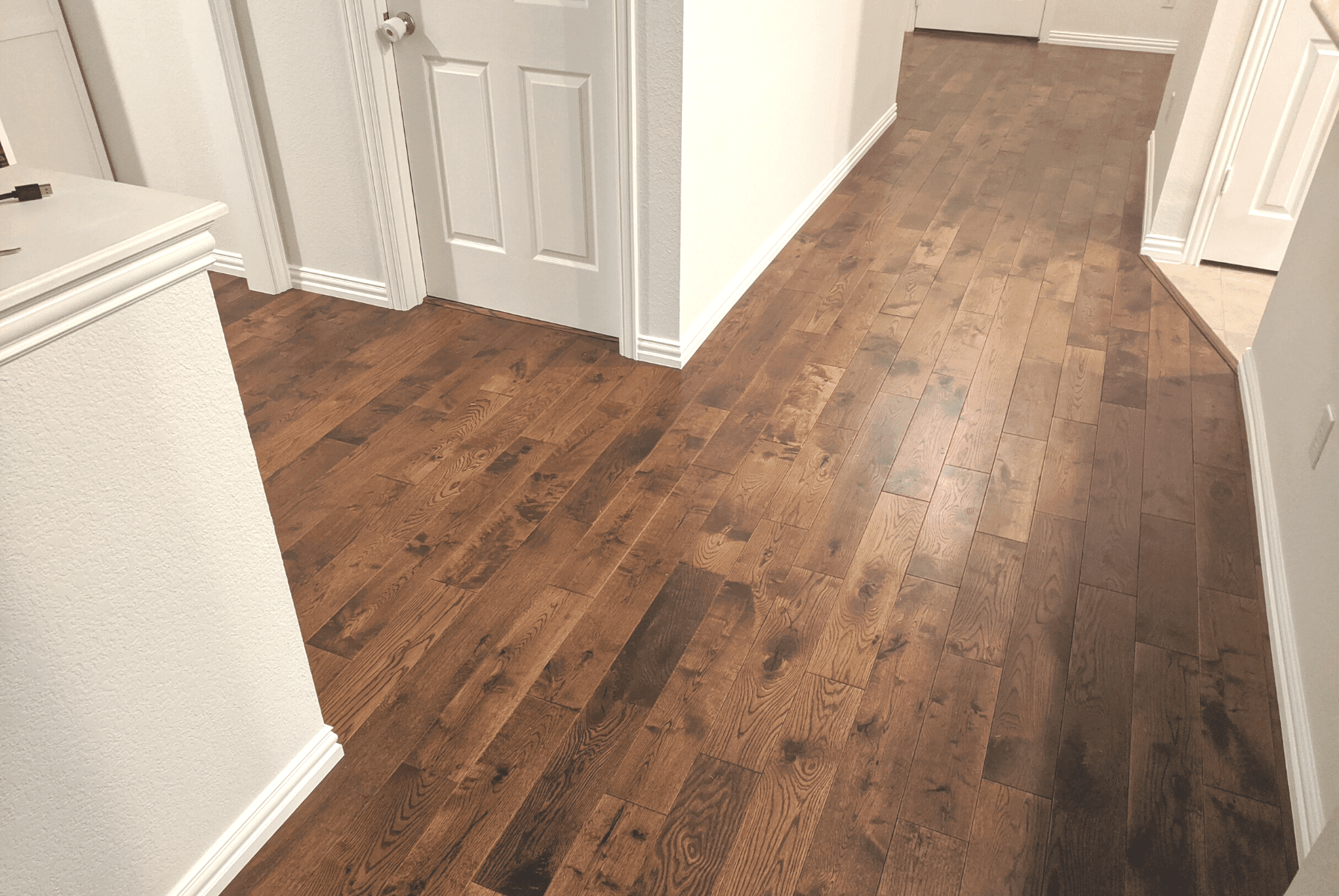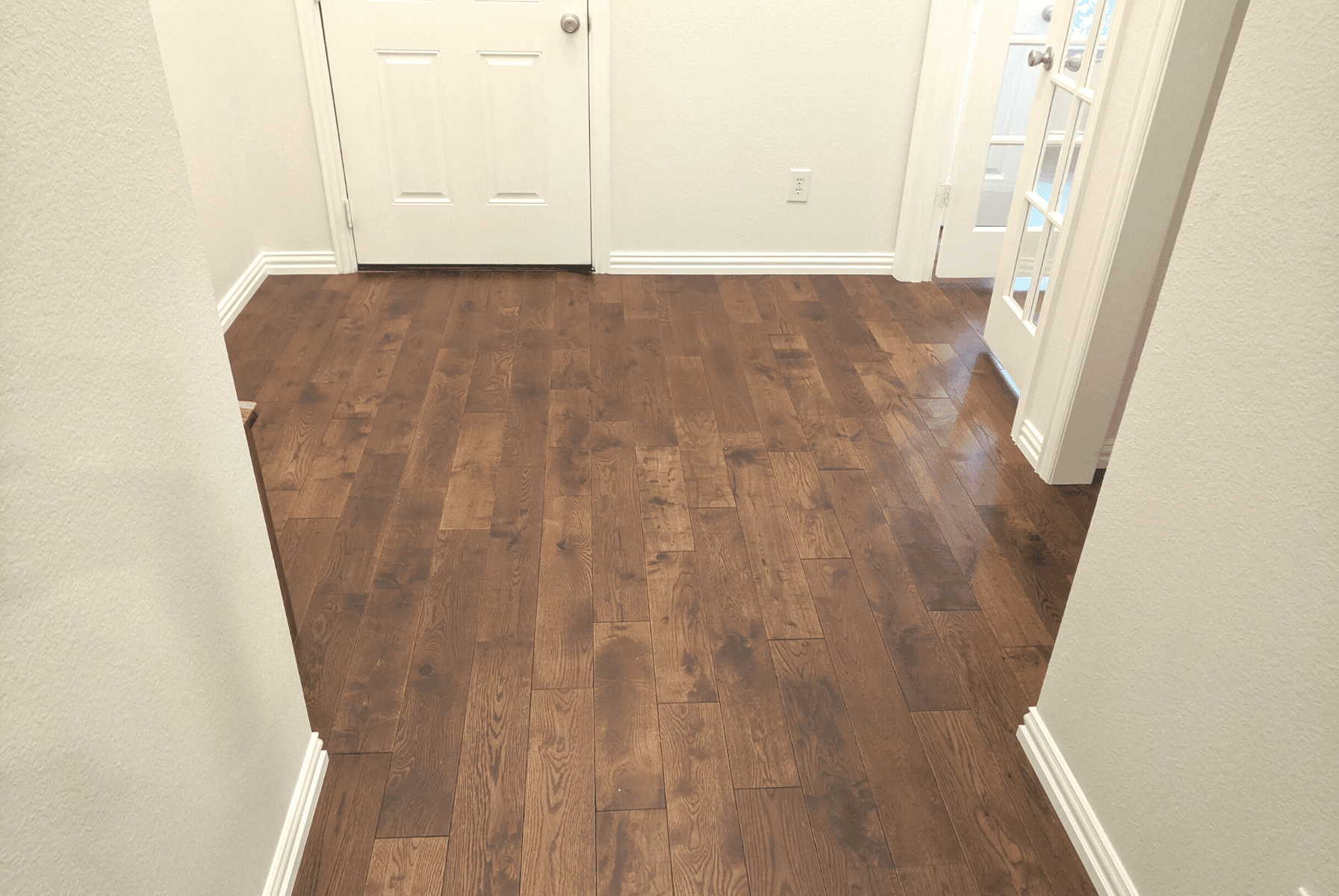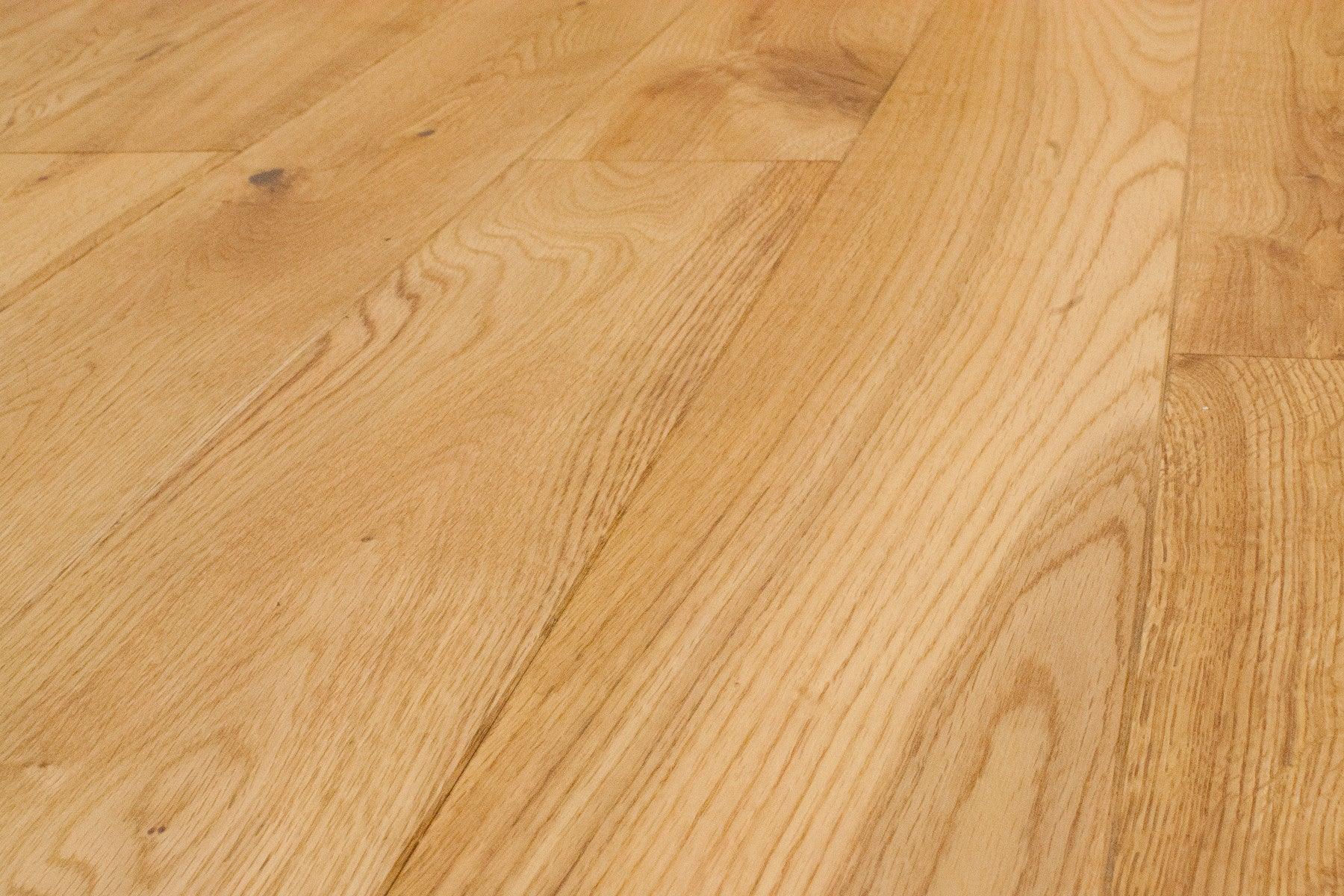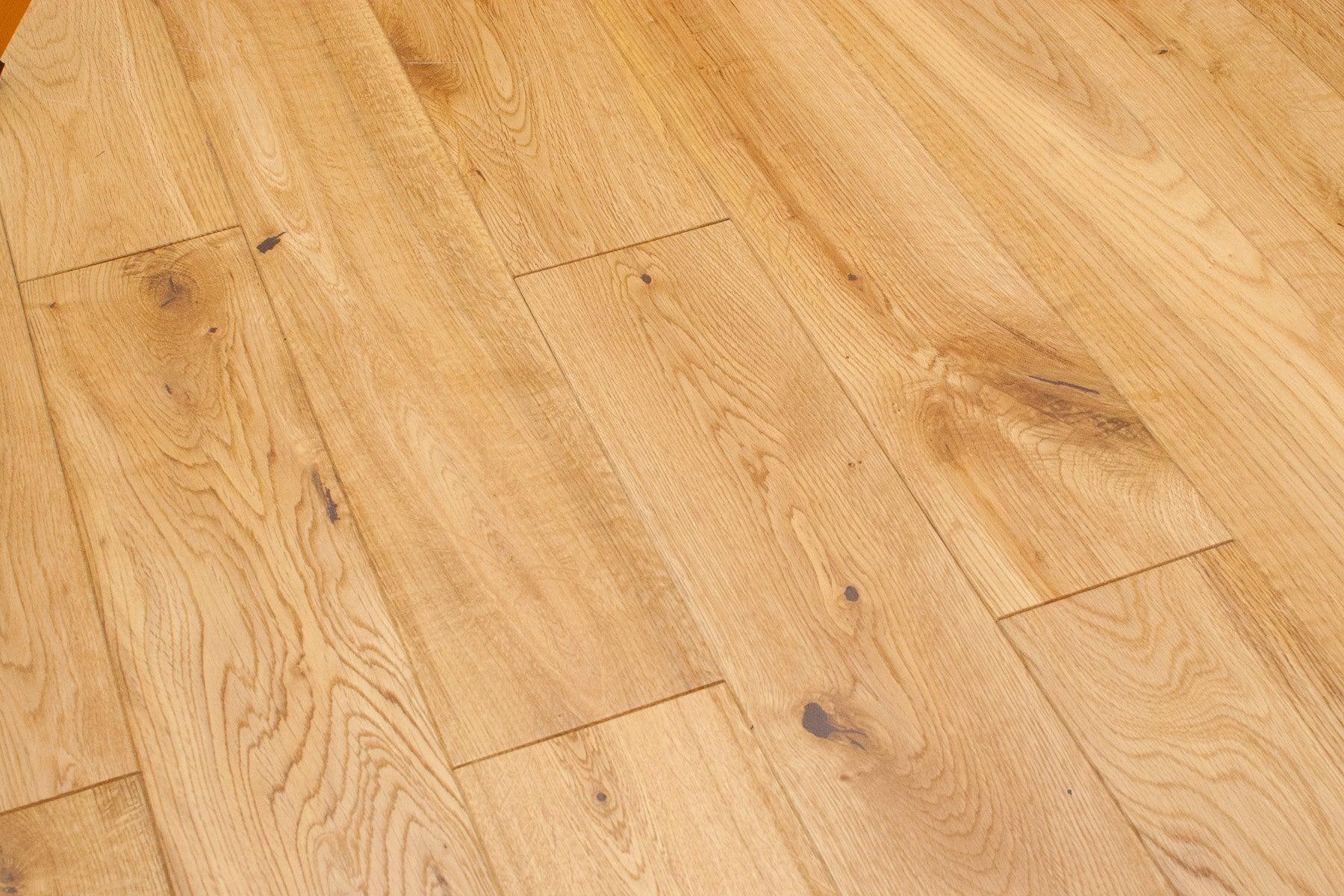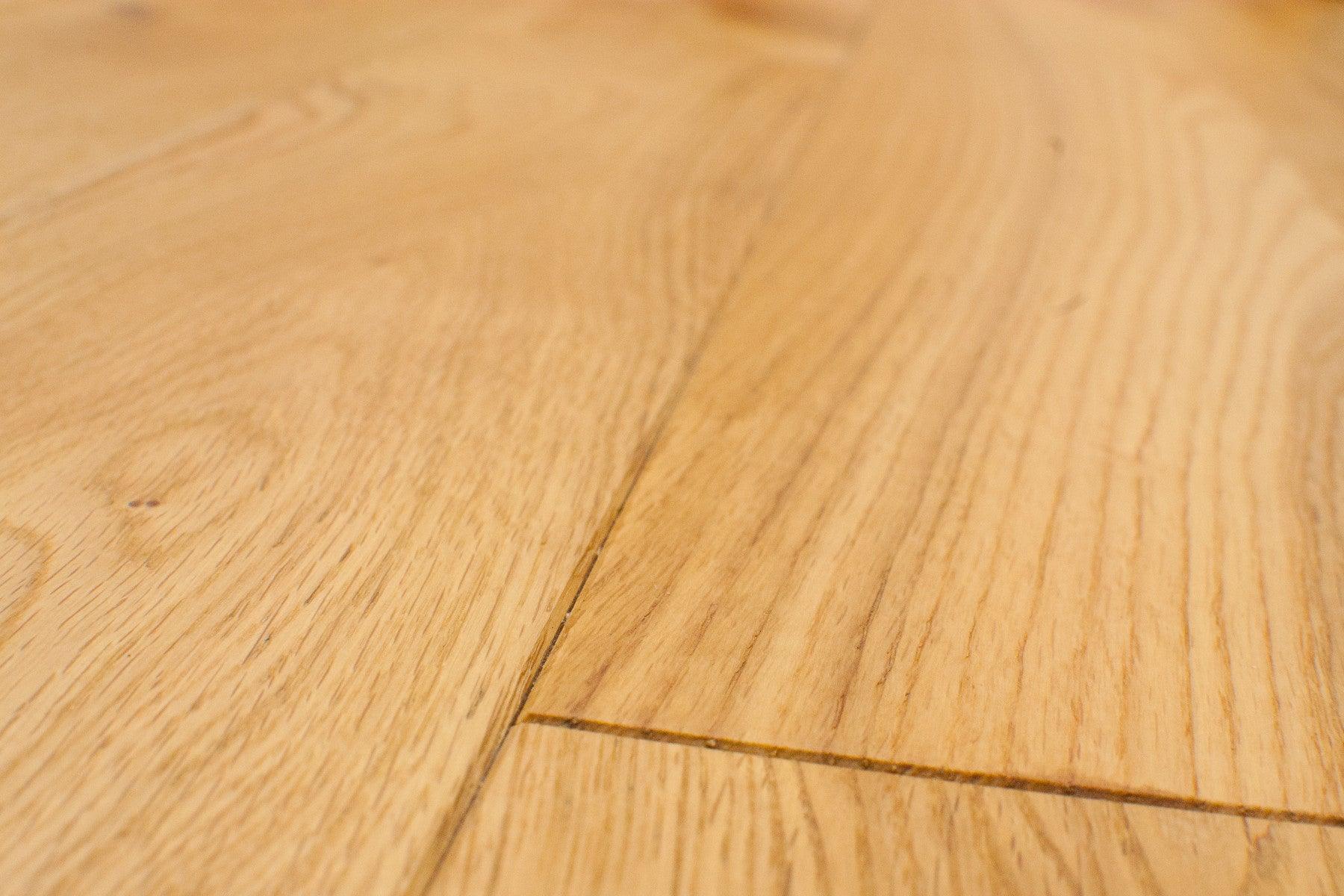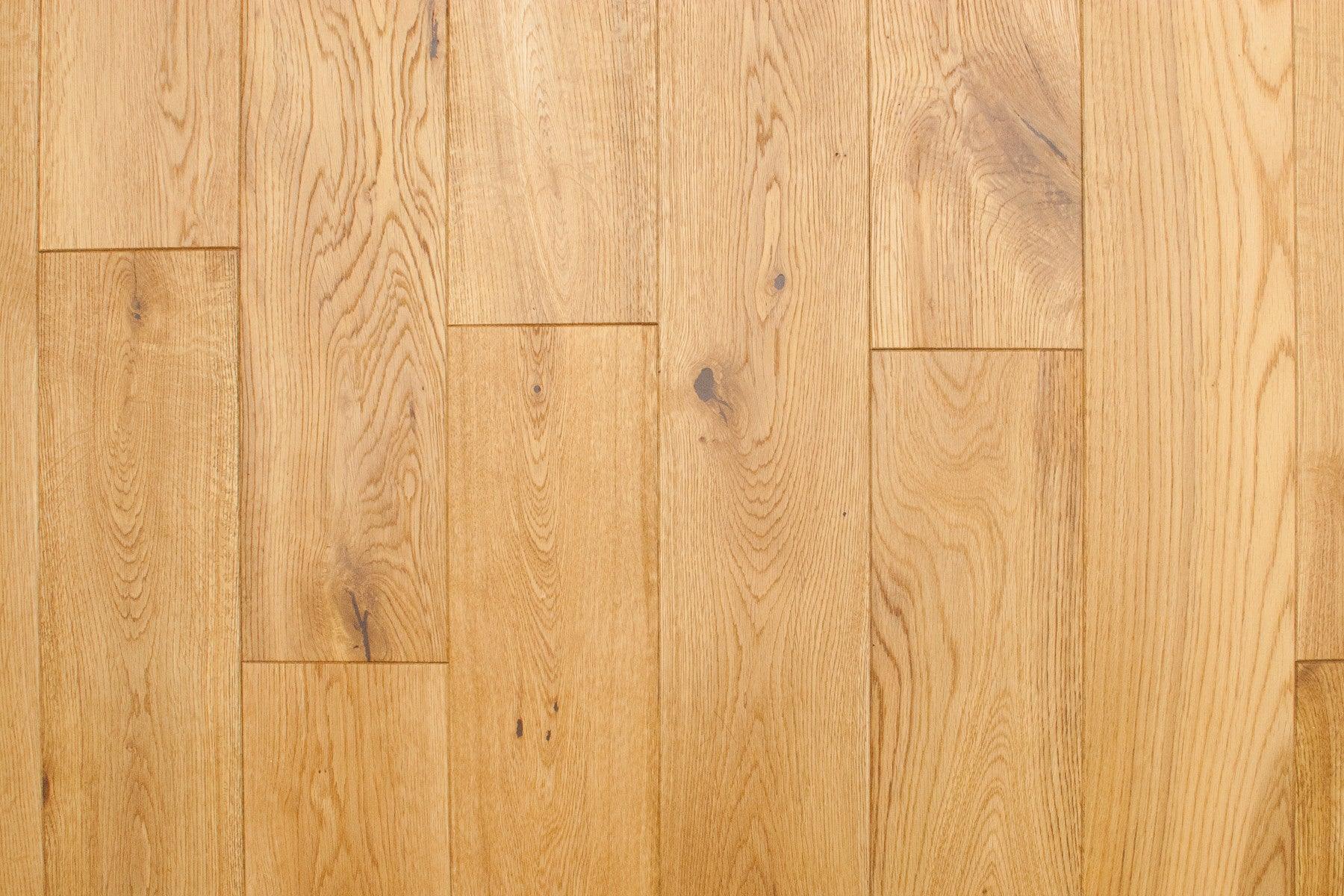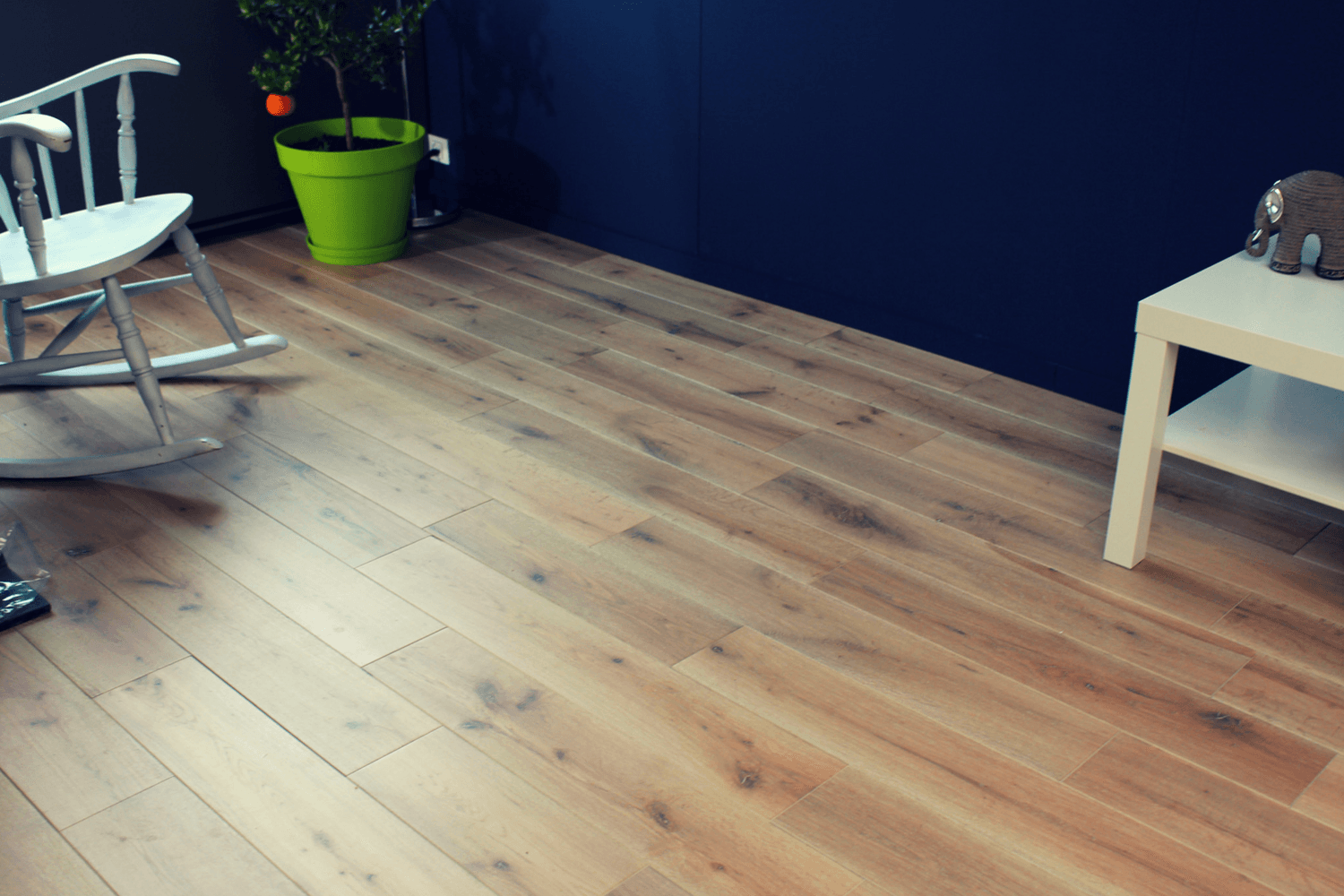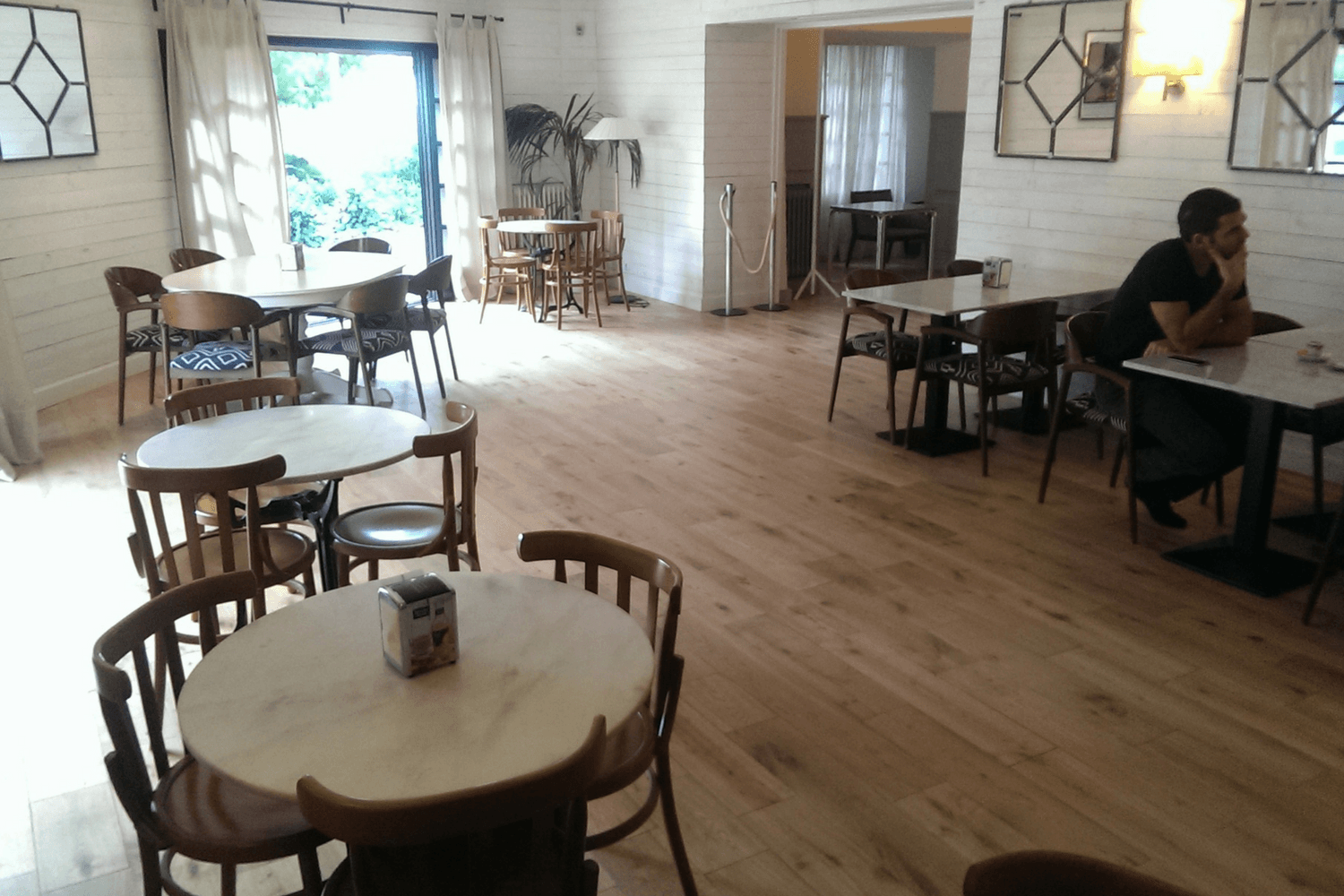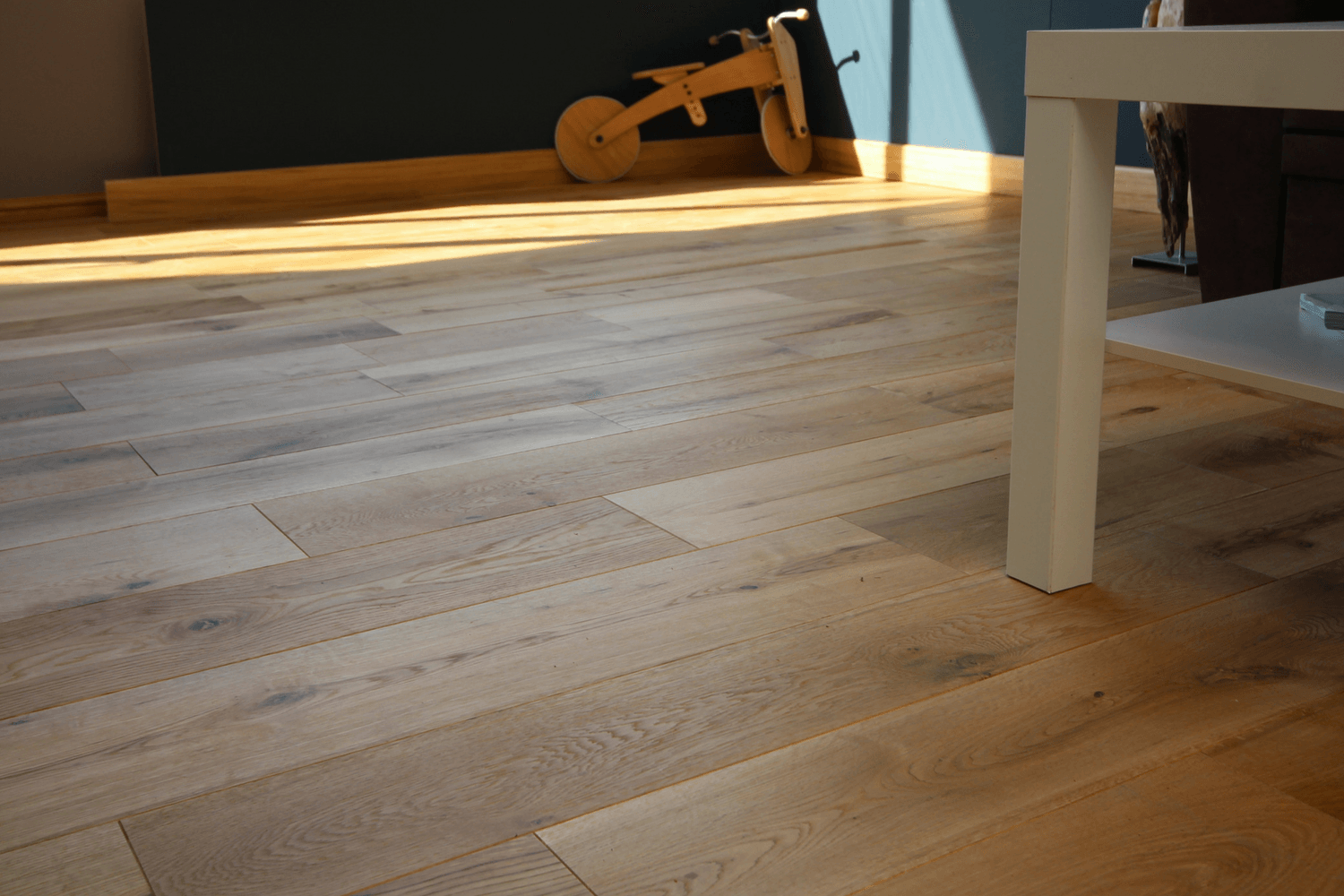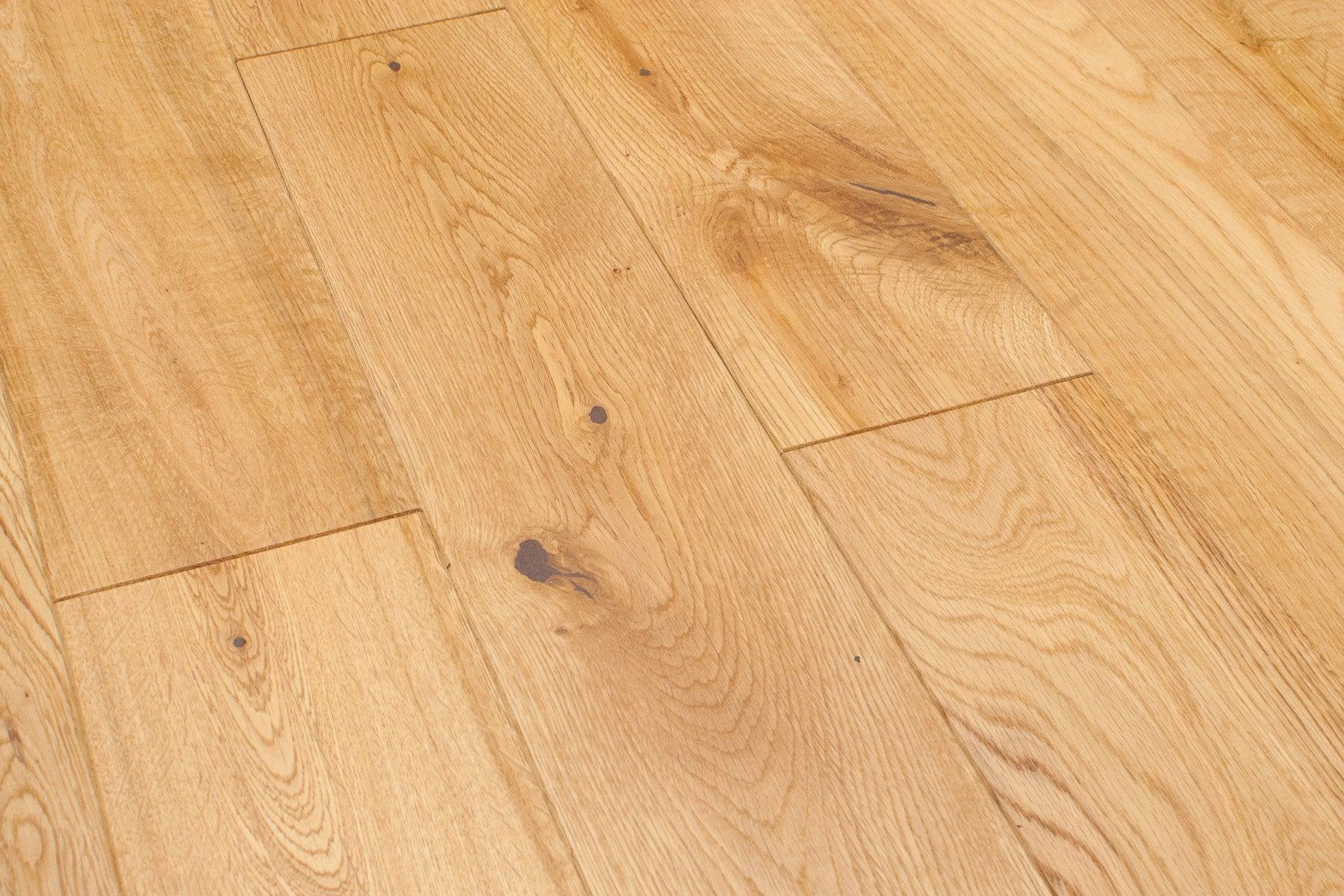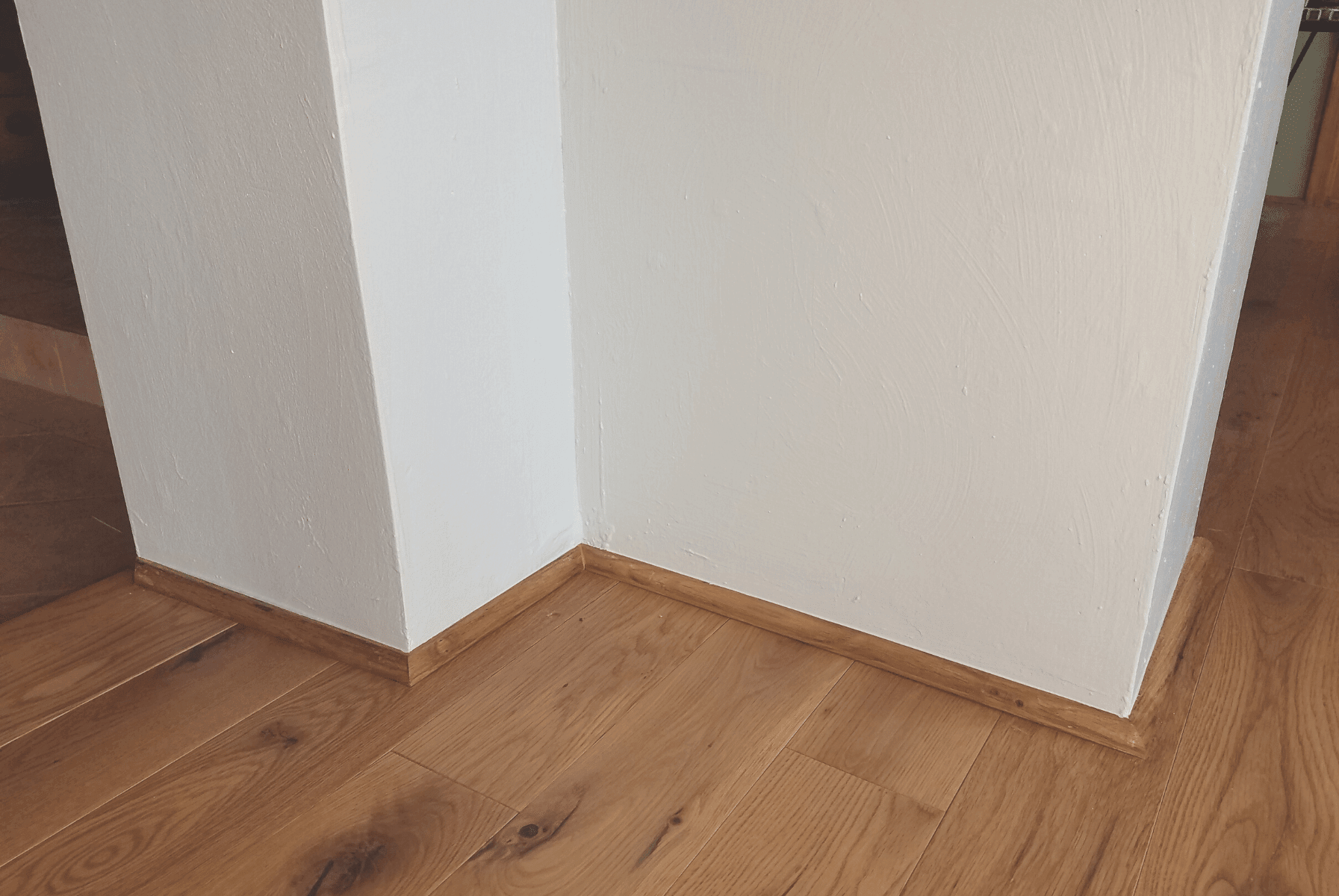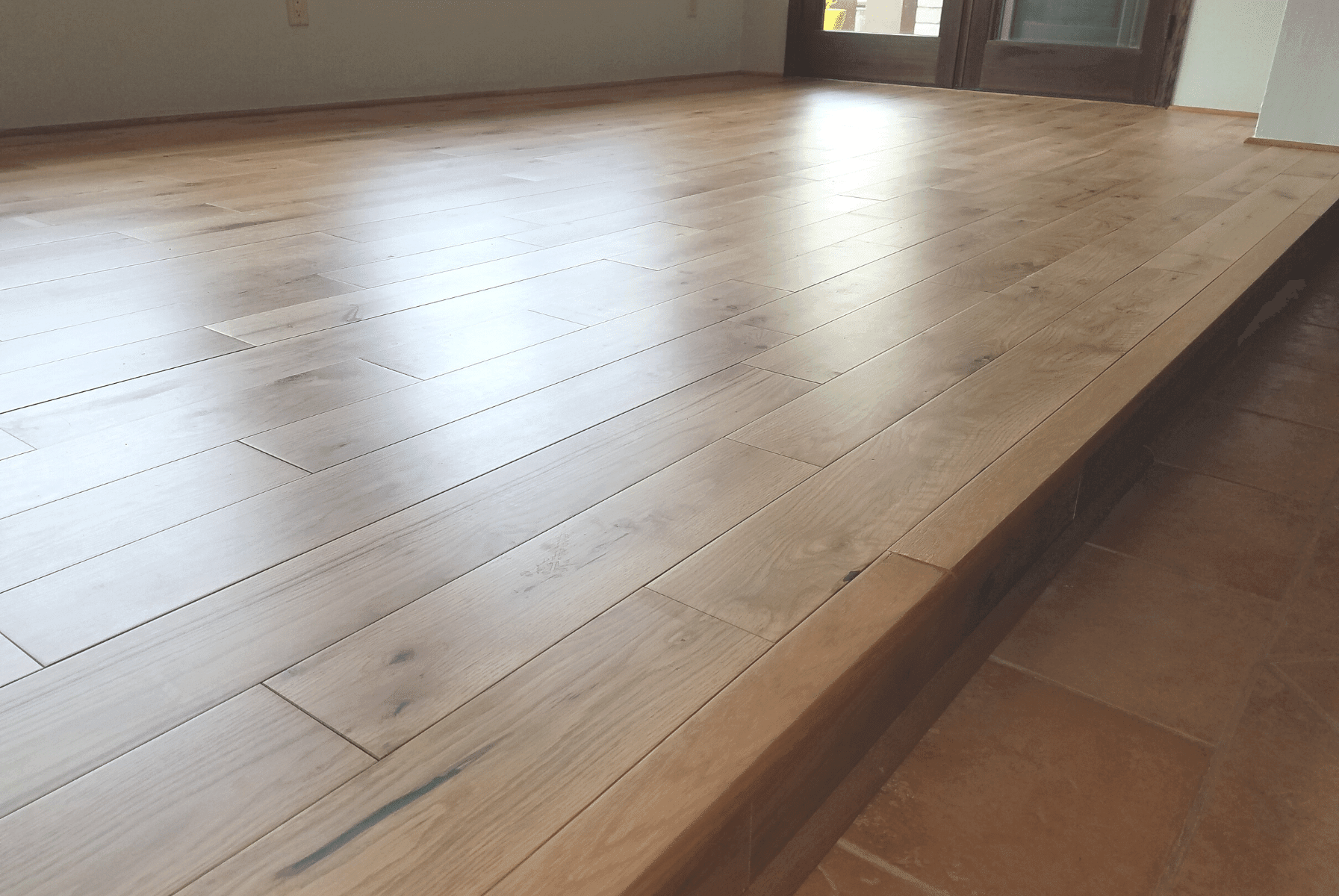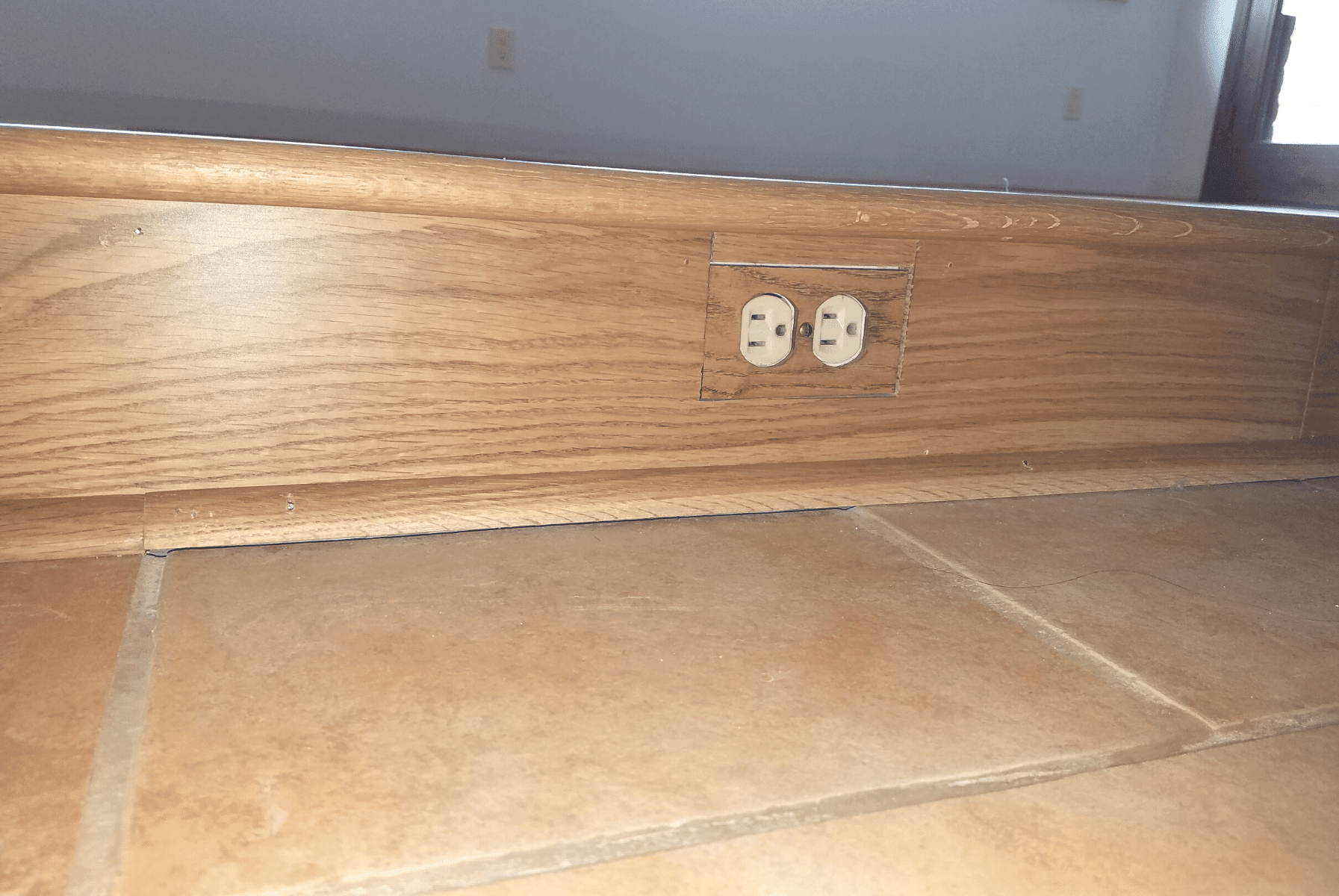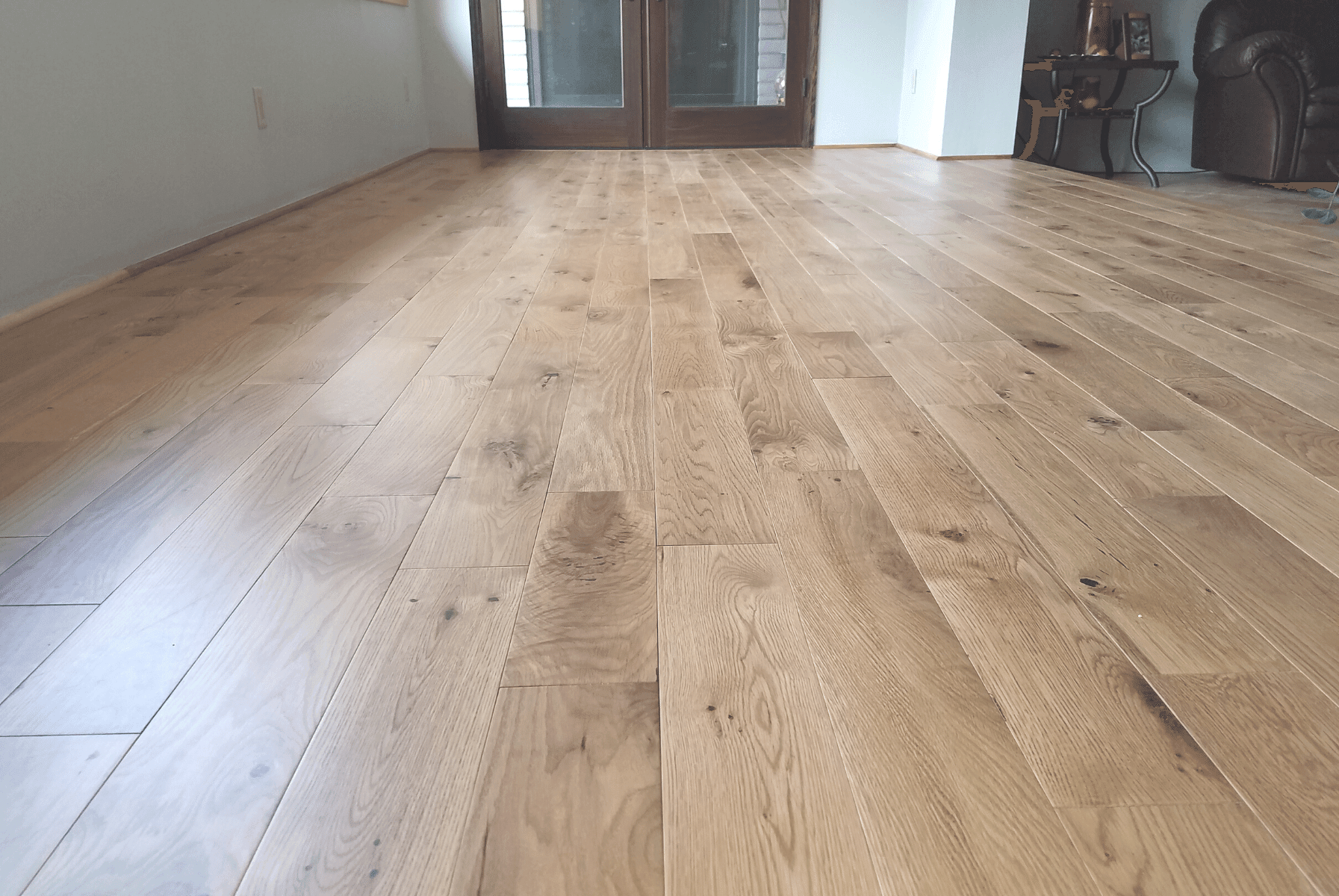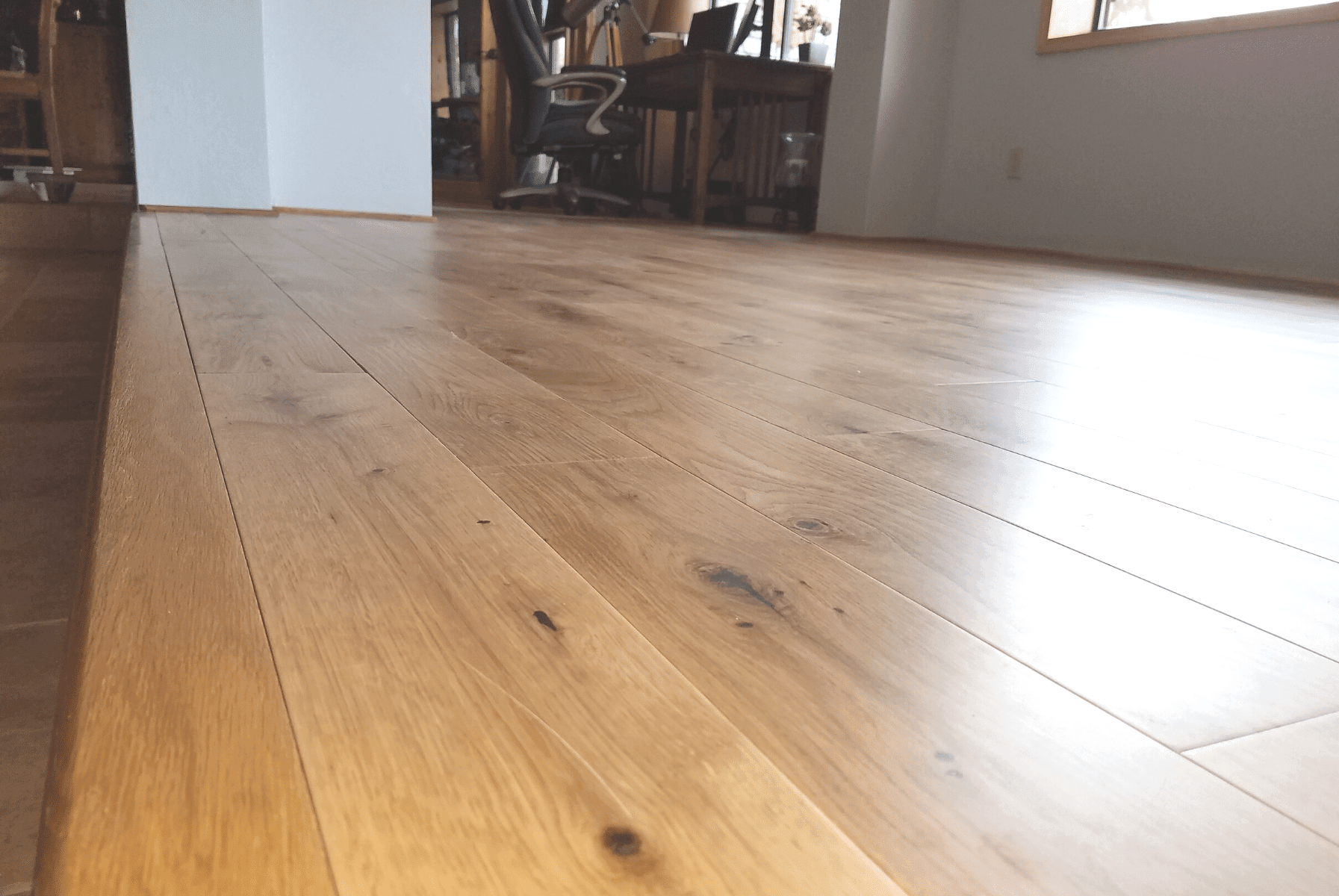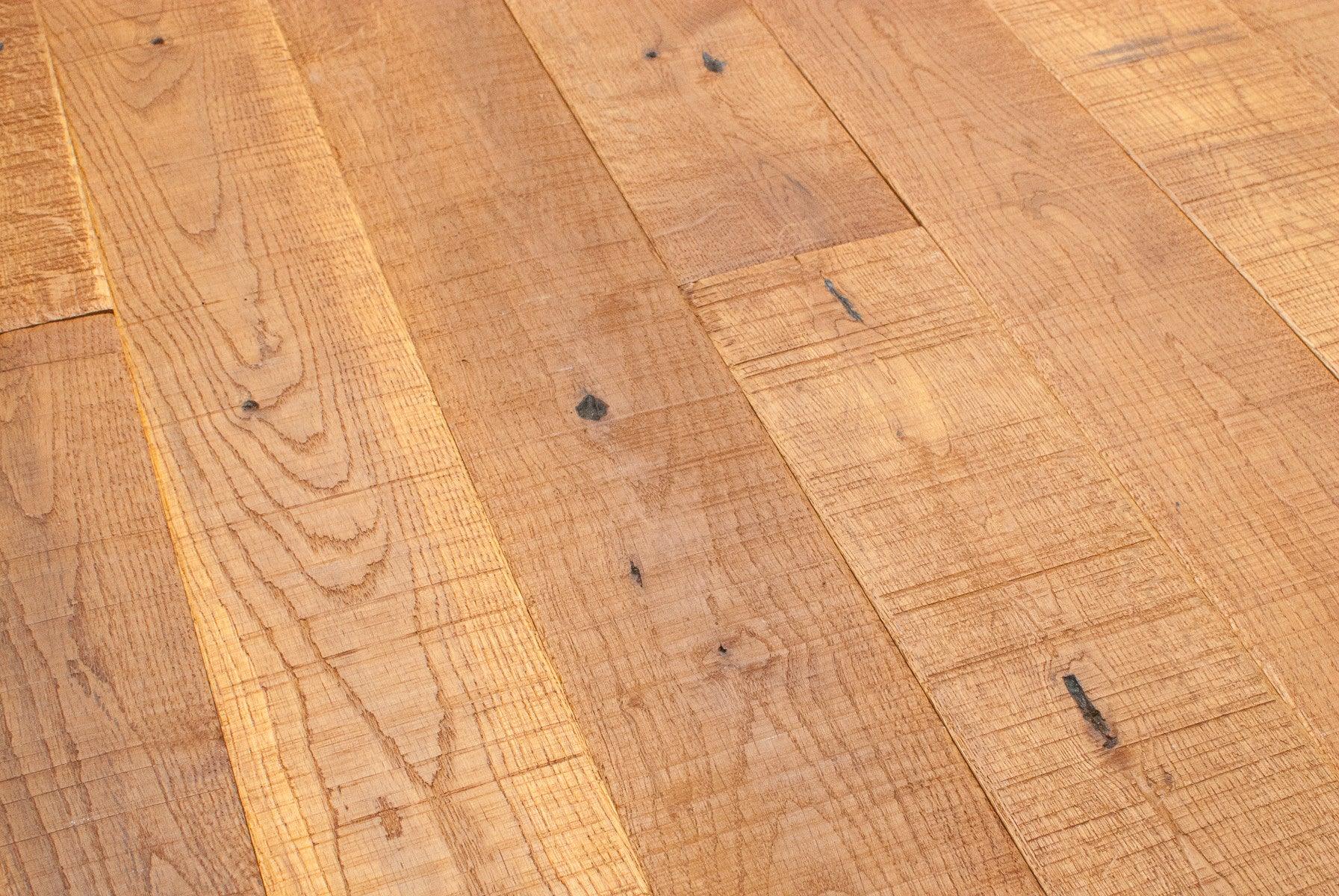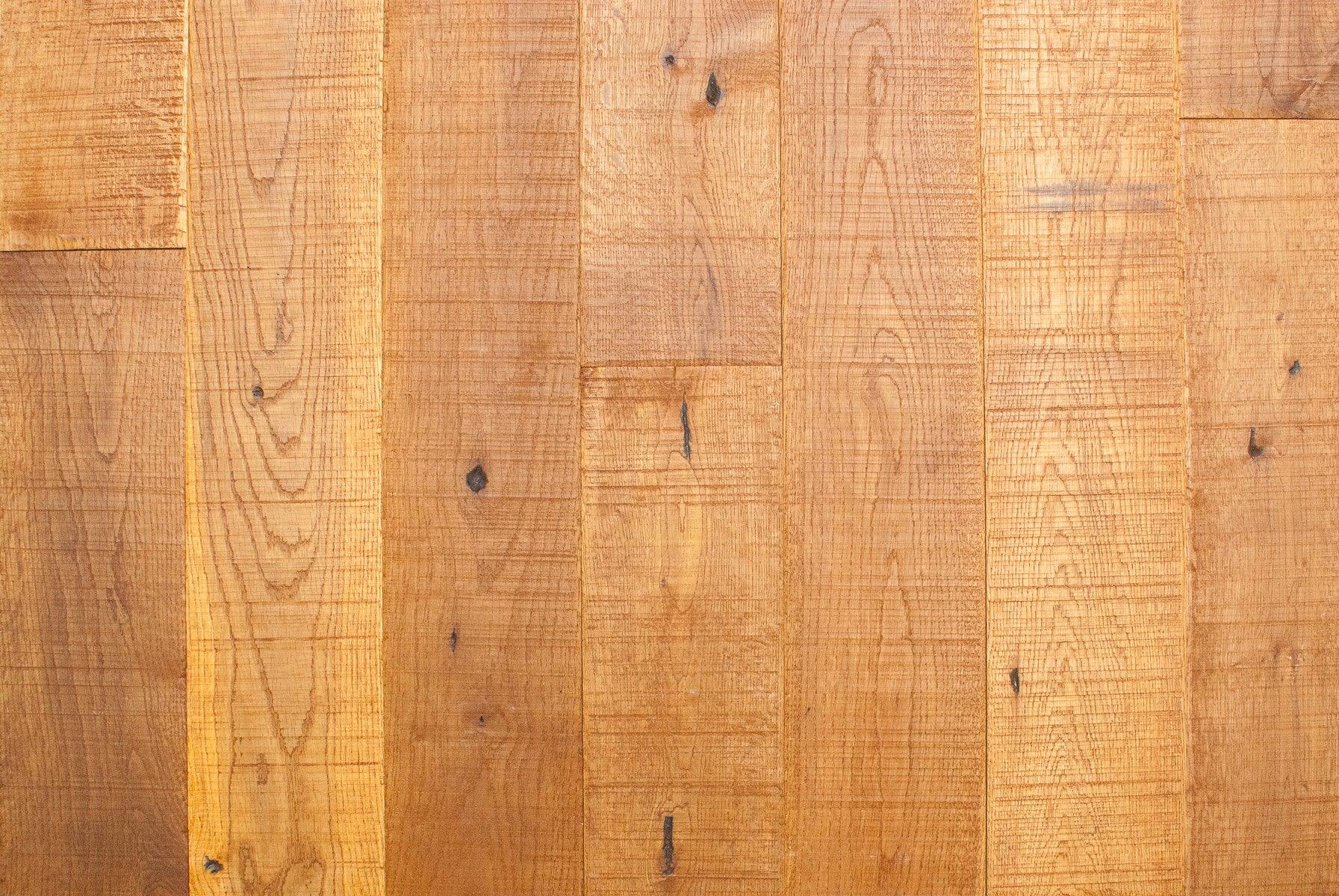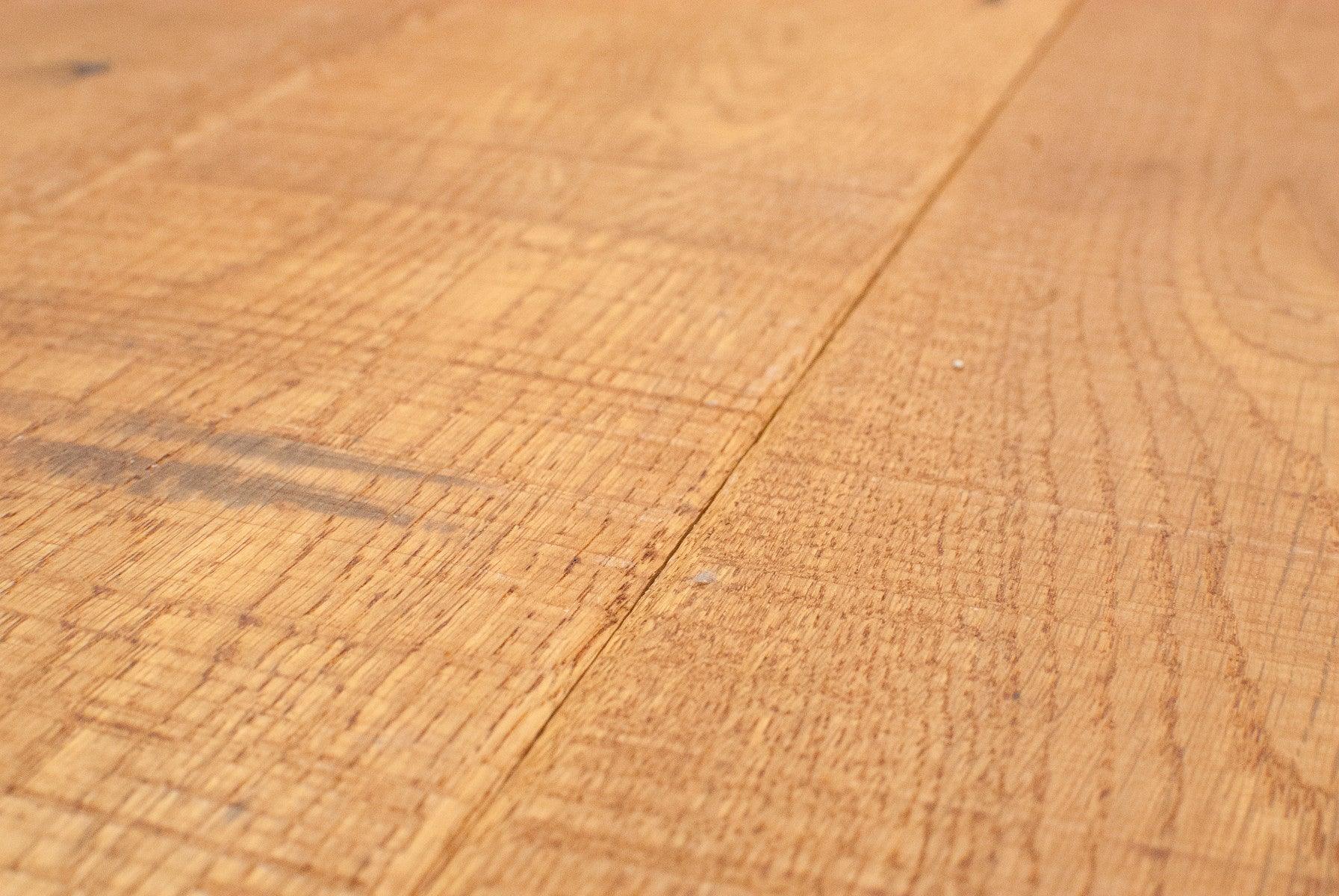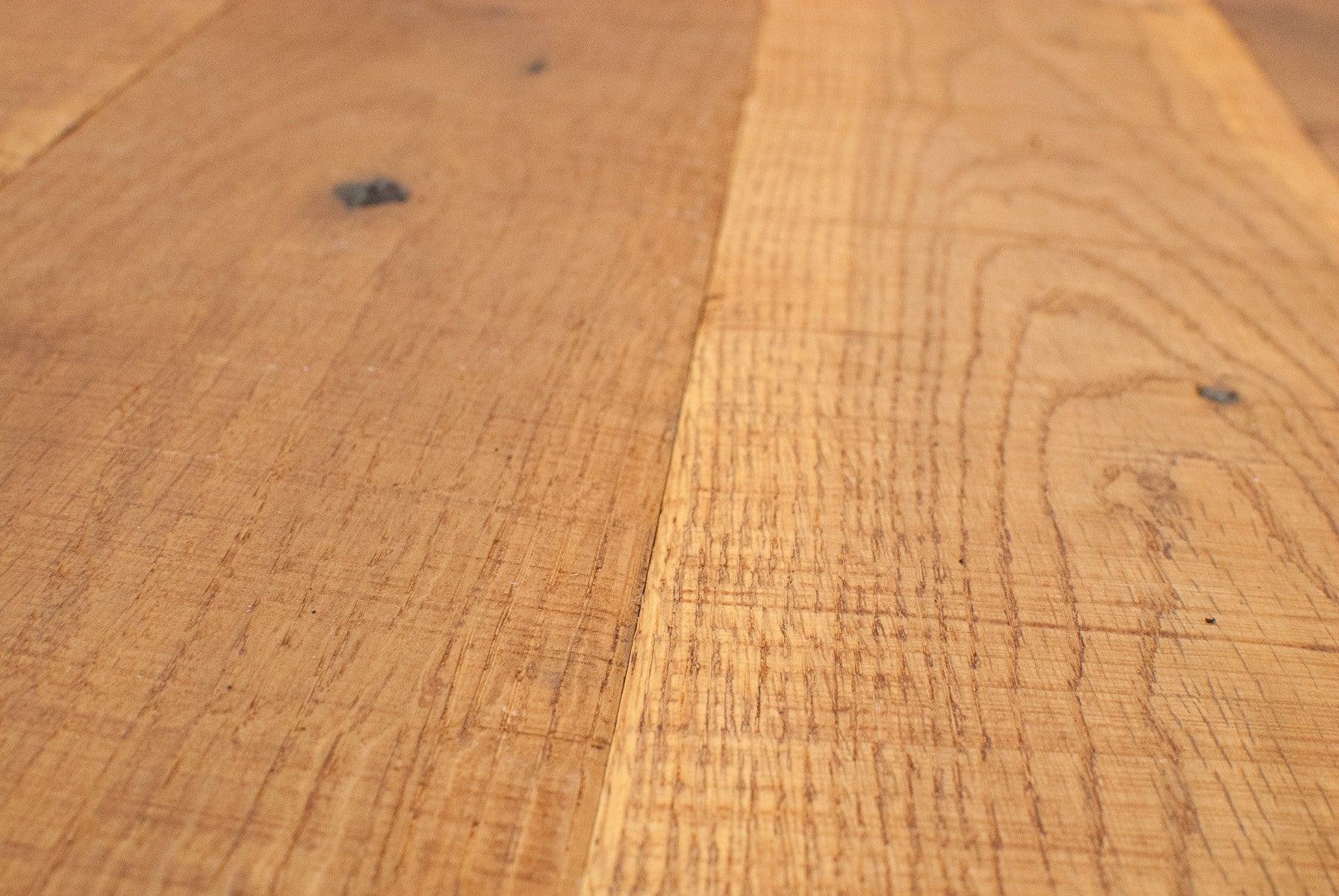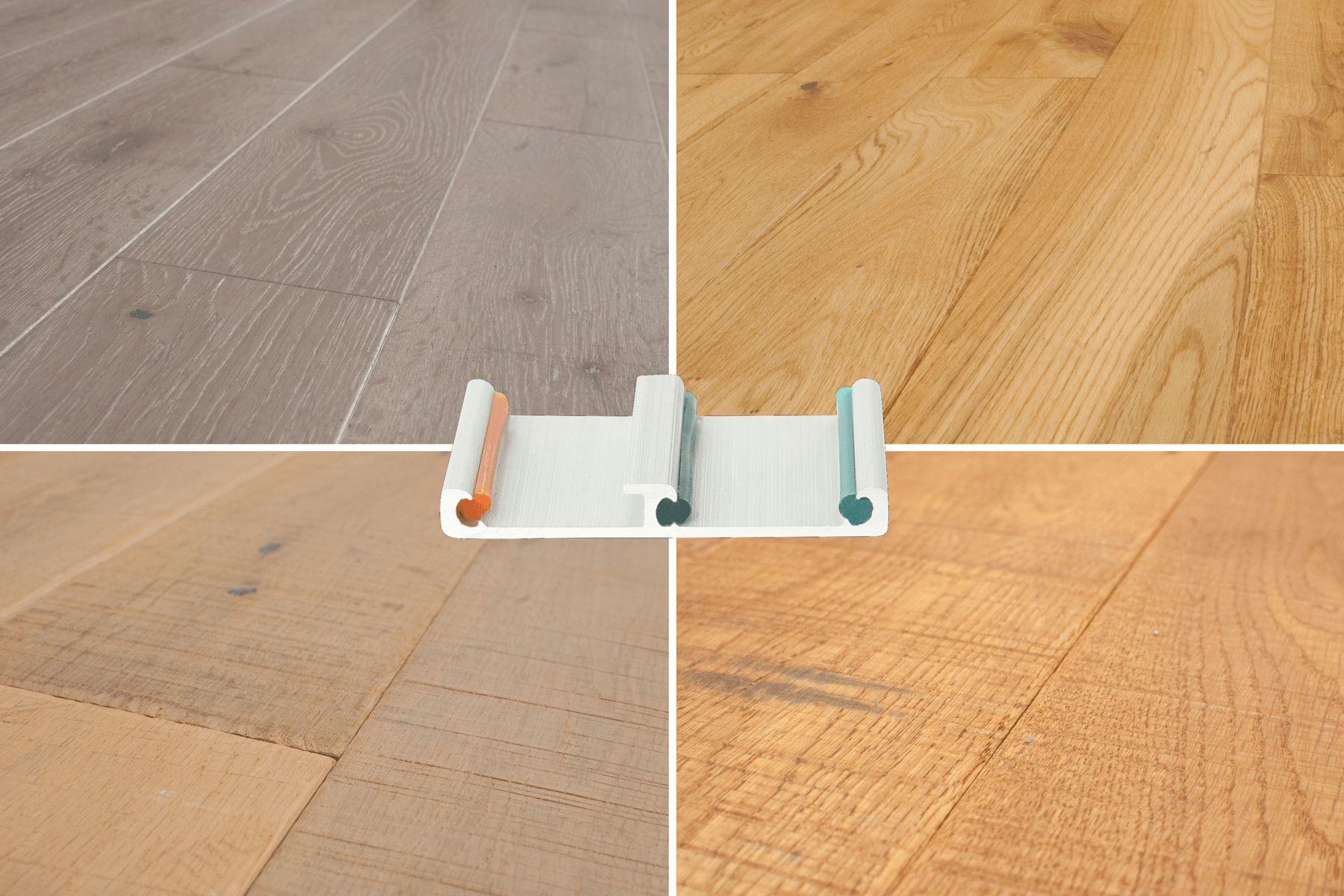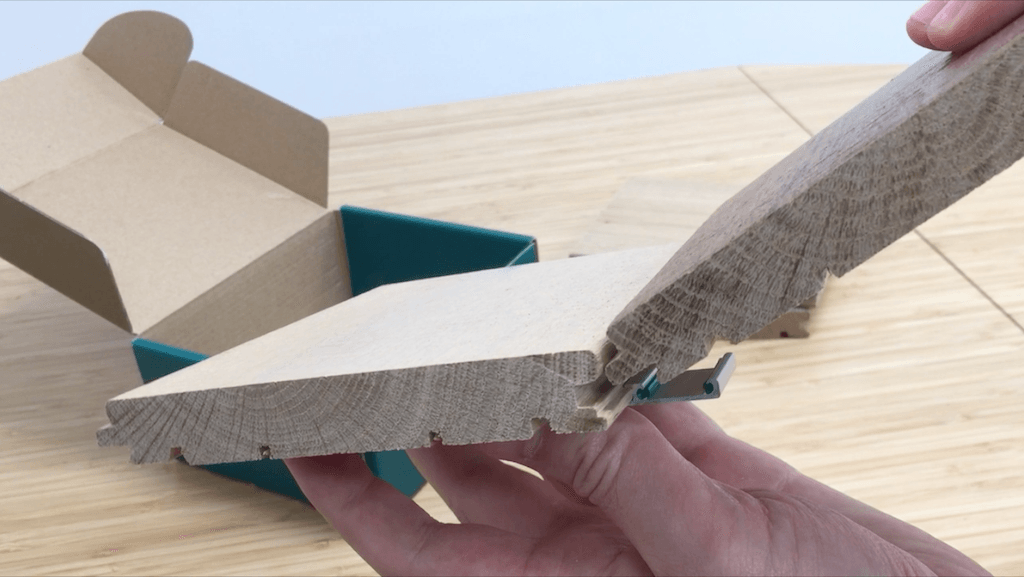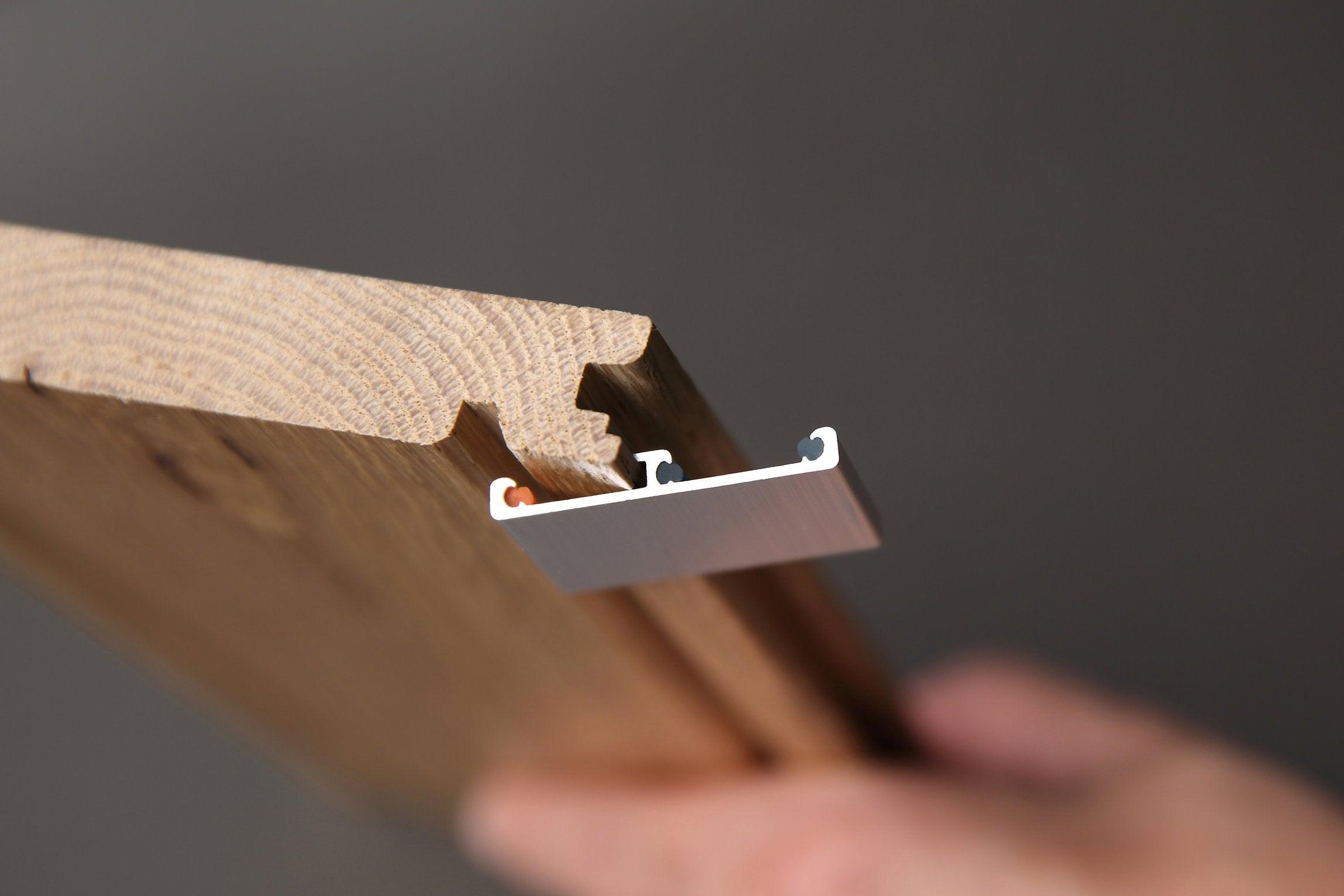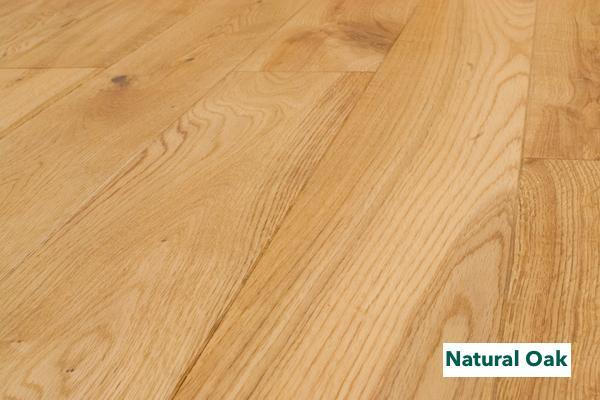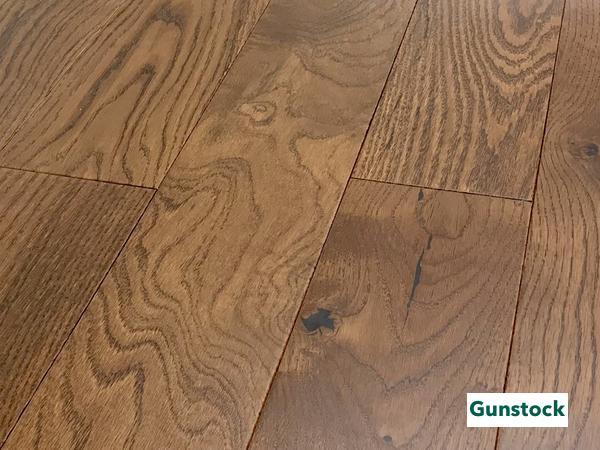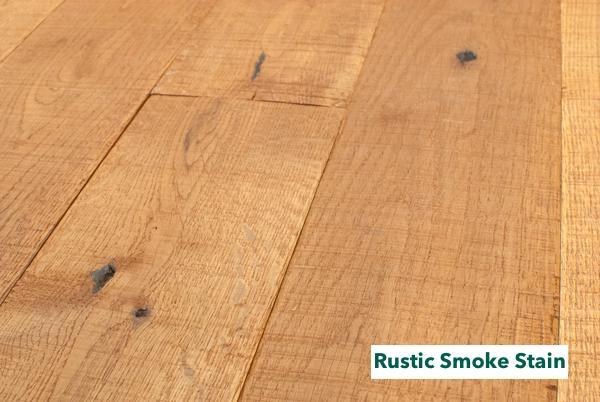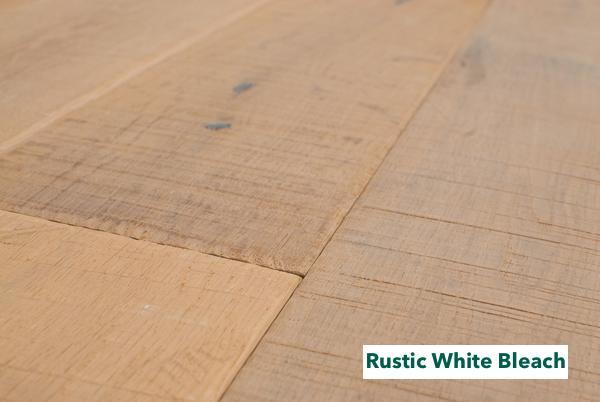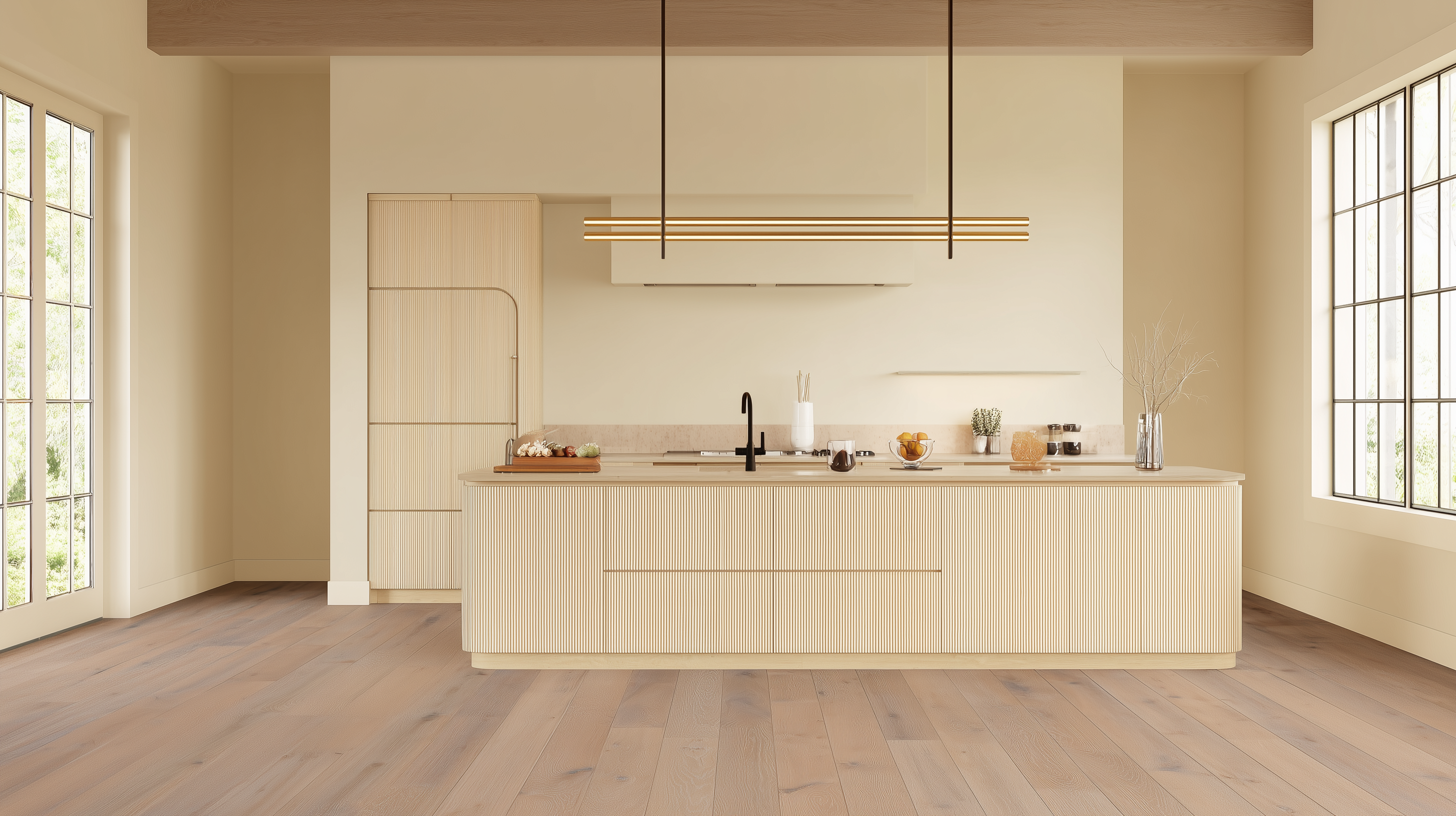Oak has always felt at home underfoot. It wears time gracefully, softens with sunlight, and adapts to nearly every design language—from tailored minimalism to rustic heritage. But beneath that shared legacy lies a quiet decision: red oak or white oak? The difference isn’t just tonal—it’s textural, emotional, architectural.
In this guide, we explore how each species tells a different story underfoot. From grain pattern to finish, durability to design tone, we’ll help you choose the oak that fits your space—and your life.
Curious how white oak might transform your room? Order a free Easiklip sample and see the grain, tone, and texture in real light.

Grain & Tone: A Tale of Two Textures
Of the 90+ oak species in North America, only red and white oak are commonly used for hardwood flooring. These two species grow large, straight, and knot-free, making them ideal for flooring. The main differences between them come down to color and grain pattern.
Color Comparison: Red Oak vs. White Oak
Despite its name, red oak doesn’t actually have red wood—the name comes from its bright red fall leaves. However, the heartwood (center of the tree) does have a subtle reddish hue. White oak, on the other hand, has a golden, tan, or honey-brown shade.

If you choose a natural finish, these differences will stand out more—red oak takes on a pinkish tone, while white oak darkens to a richer, warmer brown. Both species accept stains well, but red oak tends to pull warmer, reddish hues, while white oak absorbs stain into deeper brown tones.

Grain Differences Between Red Oak and White Oak
If you compare red and white oak side by side, you’ll notice distinct grain differences. White oak has tighter, straighter grain with long, pronounced medullary rays (those small dark streaks in the wood). This gives it a more uniform, elegant look.
Red oak has a more varied grain pattern—with swirls, waves, and zigzag lines that give it a busier, more textured appearance. The wider grain also helps to hide dents and scratches better than white oak.
Want a visual breakdown? Check out this video on red oak vs. white oak grain patterns and see how different saw cuts create unique looks.
Durability & Water Resistance: Which Oak Lasts Longer?
Both red and white oak are durable choices for hardwood floors, but white oak has a slight edge.
-
White Oak is denser, harder, and more water-resistant, making it a better choice for kitchens, entryways, and homes with pets or kids.
-
Red Oak is slightly softer but still holds up well under daily wear.
Because of its high water resistance, white oak has been used for boat building, whiskey barrels, and even the USS Constitution (“Old Ironsides”)—which has been floating since 1797!
If you want maximum durability, white oak is the winner.
Cost Comparison: Is White Oak More Expensive Than Red Oak?
When it comes to hardwood flooring, both red oak and white oak are affordable choices, but there is a slight price difference. White oak generally costs a bit more due to its higher density, durability, and water resistance.
Price Breakdown:
-
Red Oak: $3 - $6 per sq. ft.
-
White Oak: $3 - $8 per sq. ft.
Why does white oak cost more?
White oak’s higher density, water resistance, and demand make it slightly more expensive than red oak. The production process for white oak can also be more labor-intensive, especially for premium cuts like rift and quarter sawn boards.
For budget-conscious buyers, you can find thinner ½-inch oak hardwood flooring online for around $3 per sq. ft., but keep in mind that these options may require extra tools, adhesives, or professional installation—adding to the total cost.
On the other hand, pre-finished, solid ¾-inch white oak flooring from Easiklip costs $6-$8 per sq. ft., but that price includes all the installation hardware. With Easiklip’s clip system, homeowners save money on labor costs because there’s no need for nails, glue, or expensive tools—just clip the boards together and enjoy a seamless, solid hardwood floor.
Does the extra cost of white oak pay off?
Absolutely. White oak is more durable, more water-resistant, and ages beautifully over time. If you're installing hardwood in a high-traffic area, basement, or kitchen, the slightly higher investment in white oak can save you money in the long run by reducing maintenance and replacement costs.
Mixing Red Oak and White Oak Flooring: Can You Do It?
In short, no—unless you want it to look mismatched. Red oak and white oak have different undertones and grain patterns, so mixing them will be obvious.
If you accidentally run out of red or white oak during your project, don’t panic—you still have options to make your flooring look intentional rather than mismatched:
-
Find matching boards from the same species. Search local suppliers or online retailers to find the same type of oak with a similar grain pattern and shade.
-
Create a transition or border. Instead of blending them randomly, create a decorative inlay, border, or transition strip that clearly separates the two species. This can make the difference look intentional rather than a mistake.
- Stain everything a dark color. Applying a rich, deep stain can help minimize the differences in color and grain, making the contrast between red and white oak less noticeable. However, this may not completely eliminate the variation.

Which Oak is Best for Your Home?
It all comes down to personal preference and style.
Choose white oak if you want:
-
A modern, sleek, or minimalist aesthetic.
-
A durable, water-resistant floor.
-
A neutral, beige-to-brown tone that pairs well with any décor.
Choose red oak if you prefer:
-
A warm, traditional, or rustic look.
-
A grain pattern that hides wear and tear.
-
A more affordable option without sacrificing quality.
If you’re staining the floor in a white or gray tone, white oak is the better choice. For medium to dark stains, either option will work.
Easiest White Oak Hardwood Flooring to Install
Before committing to any hardwood flooring, take a step back and ask yourself a few key questions:
-
Can I get enough of this wood to complete my project? Some flooring styles get discontinued, and finding matching boards later can be a nightmare.
-
What’s the total cost—including materials, installation, tools, and labor? A "great deal" on flooring might not be so great once you factor in professional installation or specialized tools.
-
Do I want a DIY-friendly option? Traditional hardwood floors require nail guns, adhesives, and expert-level skill. If you’re planning to install it yourself, you need a system that makes sense for DIYers.
If you’re looking for an easy, hassle-free installation, check out Easiklip White Oak Hardwood Flooring.
-
Each board is a full ¾-inch thick—not a flimsy veneer like engineered wood.
-
Pre-finished in five stylish colors—no sanding or staining required.
-
No nails, glue, or special tools needed—just snap the boards together with the patented aluminum clip system.
-
Ideal for basements, condos, and renovations where traditional nail-down floors aren’t an option.
-
Durable and built to last, with a 25-year warranty for residential use.
With Easiklip, you can install a high-quality hardwood floor in a fraction of the time—without the frustration of complicated installation methods.
Final Thoughts: Choosing Between Red Oak and White Oak
Both red and white oak are excellent choices for hardwood flooring, but the right one depends on your style, budget, and durability needs.
White Oak is best for modern homes, high-traffic areas, and water resistance.
Red Oak is ideal for traditional spaces, warmer tones, and affordability.
If you’re looking for the easiest white oak flooring to install, Easiklip is the perfect choice—solid, durable, and DIY-friendly.
👉 Order your FREE Easiklip sample today and see why more homeowners are choosing clip-together hardwood flooring




